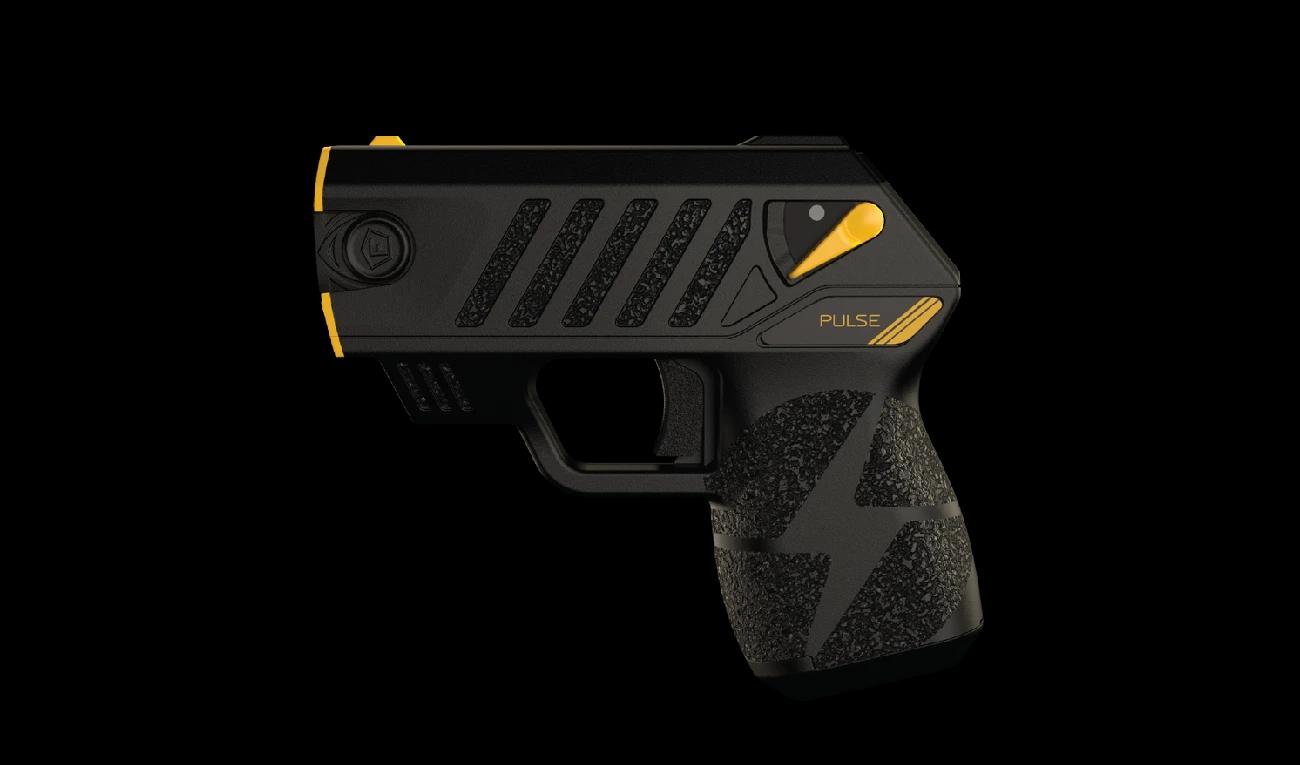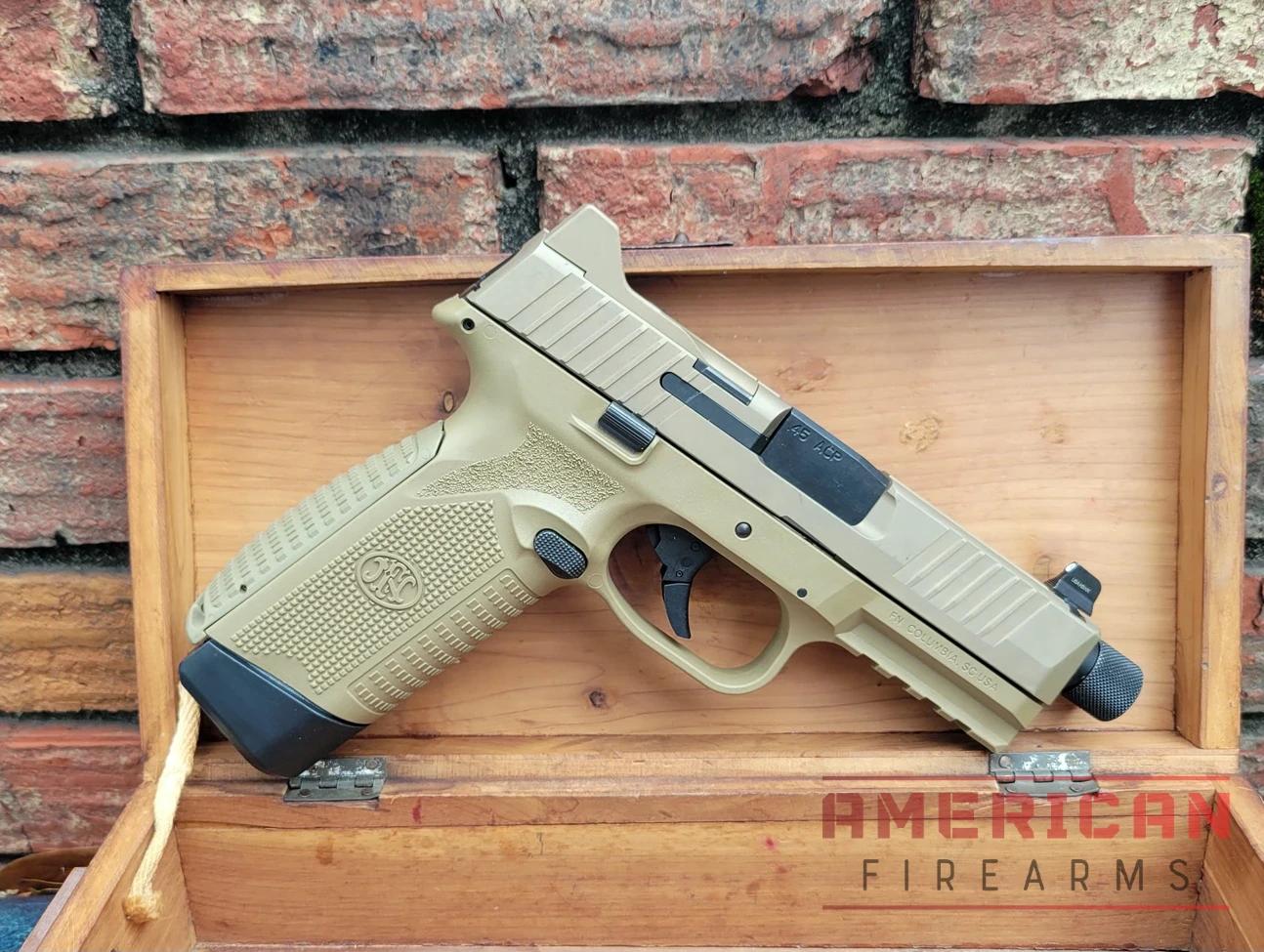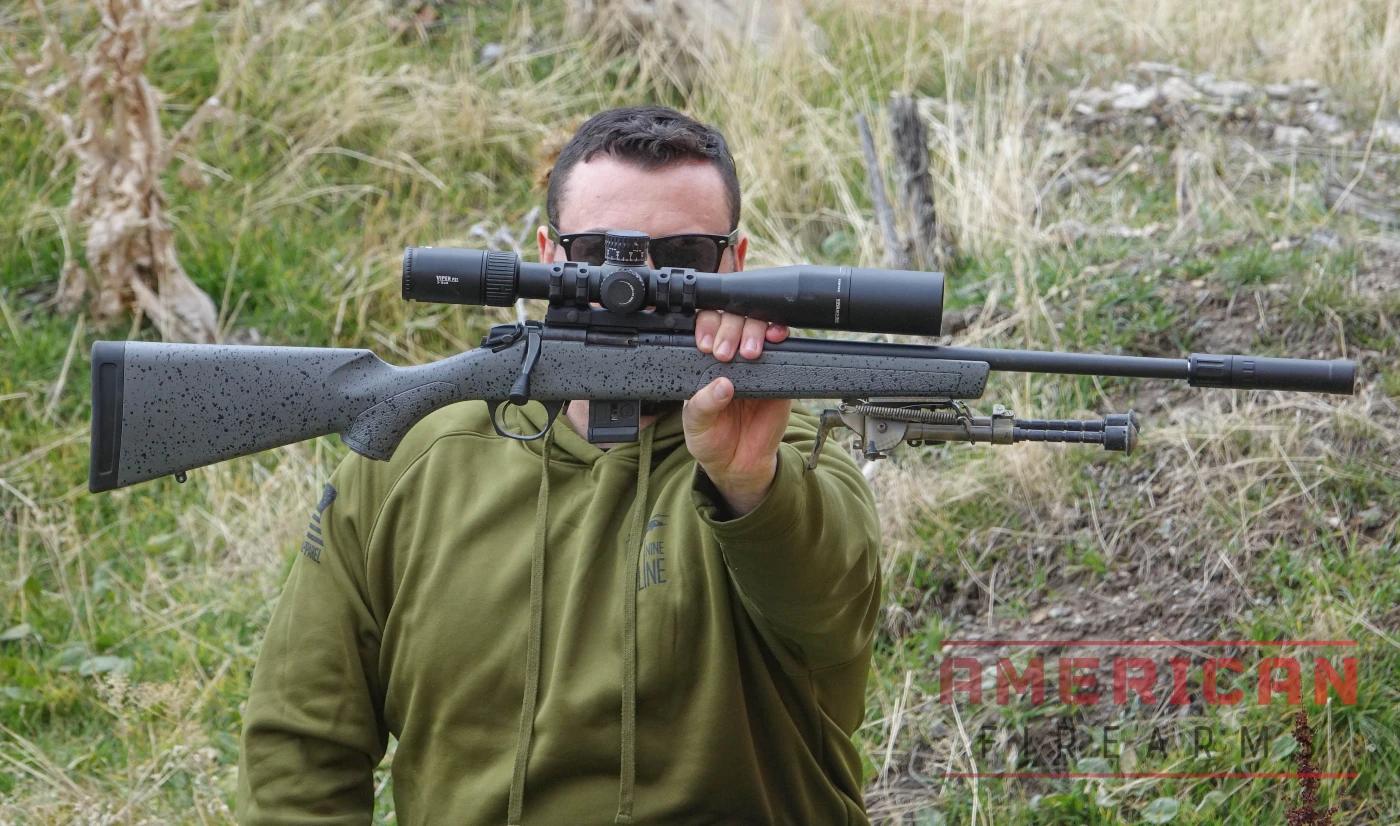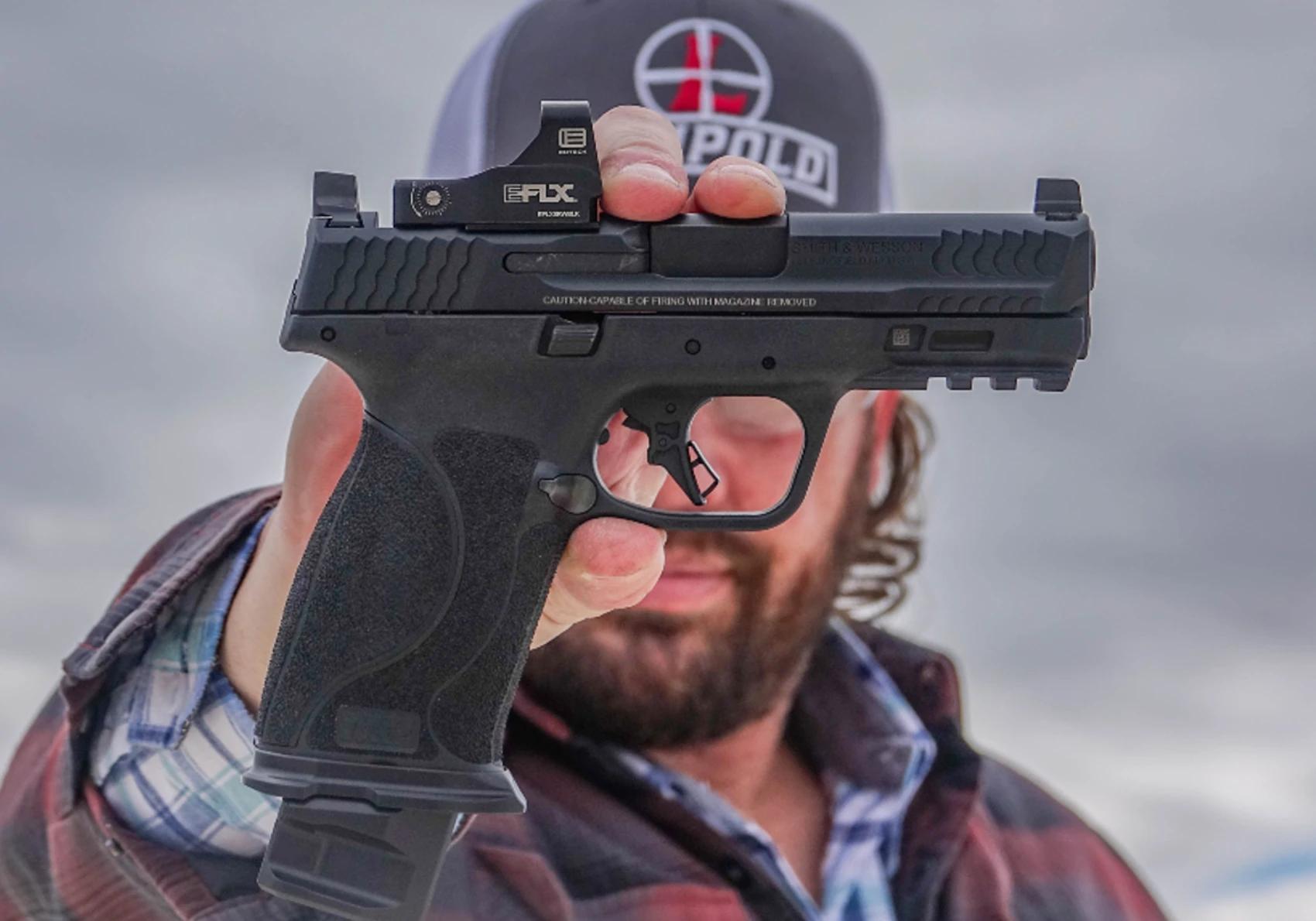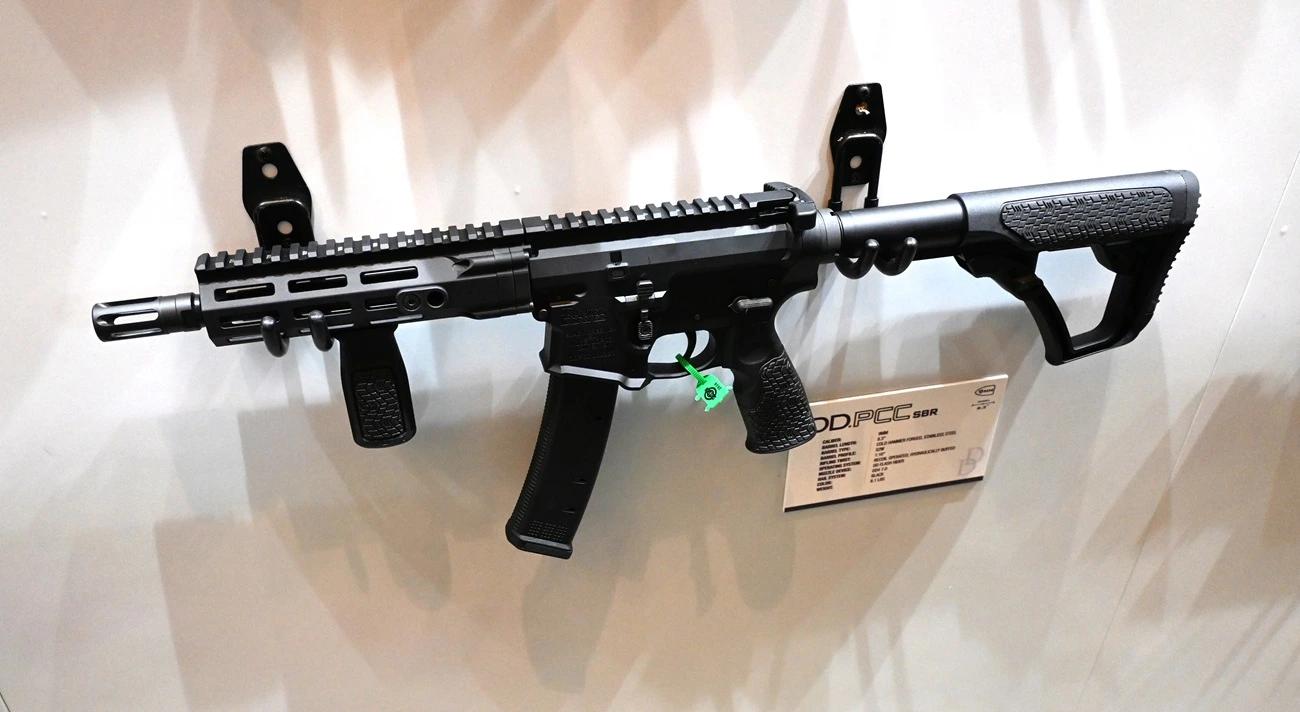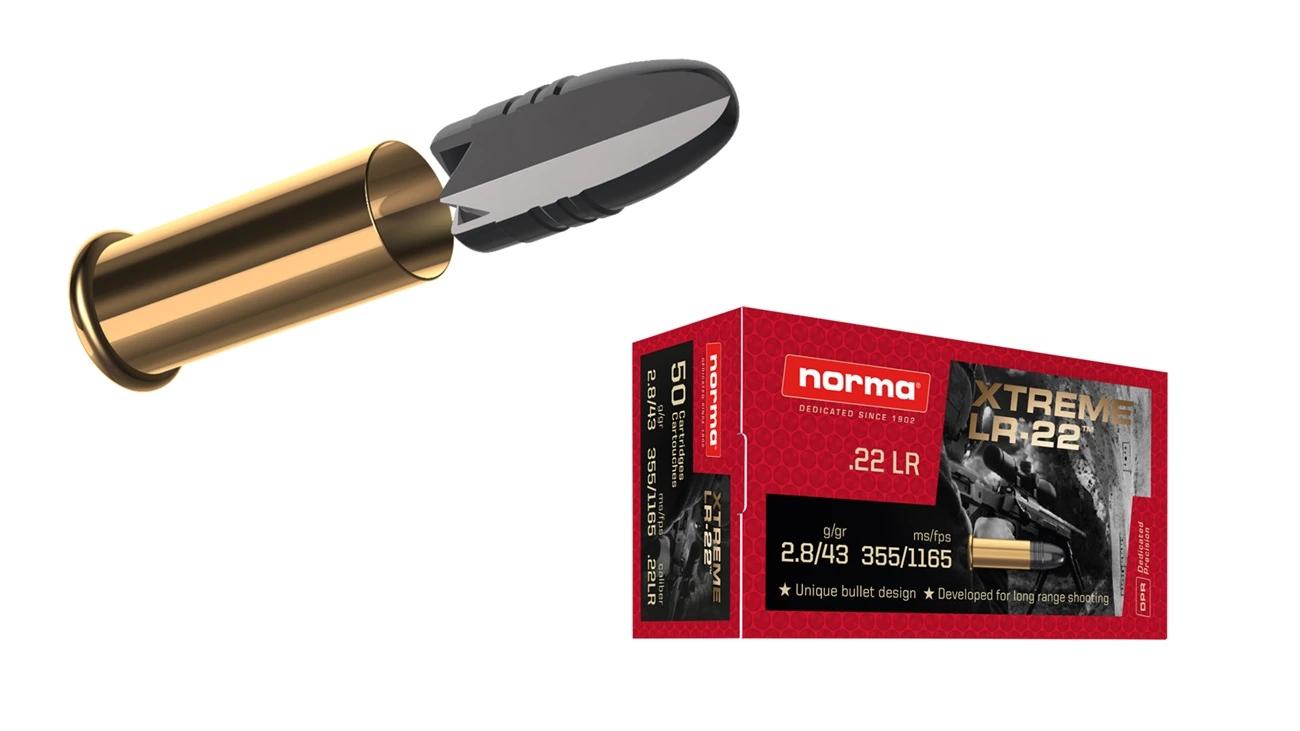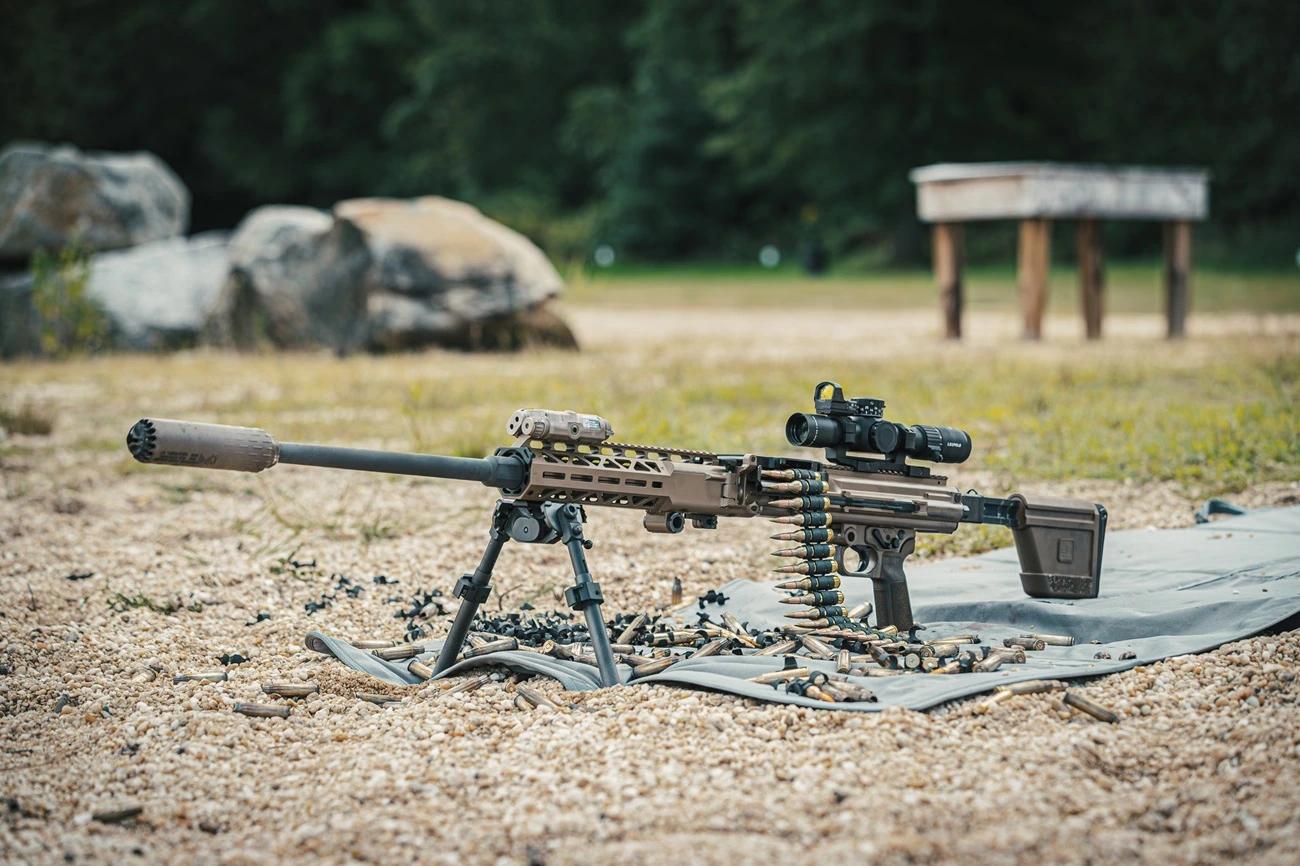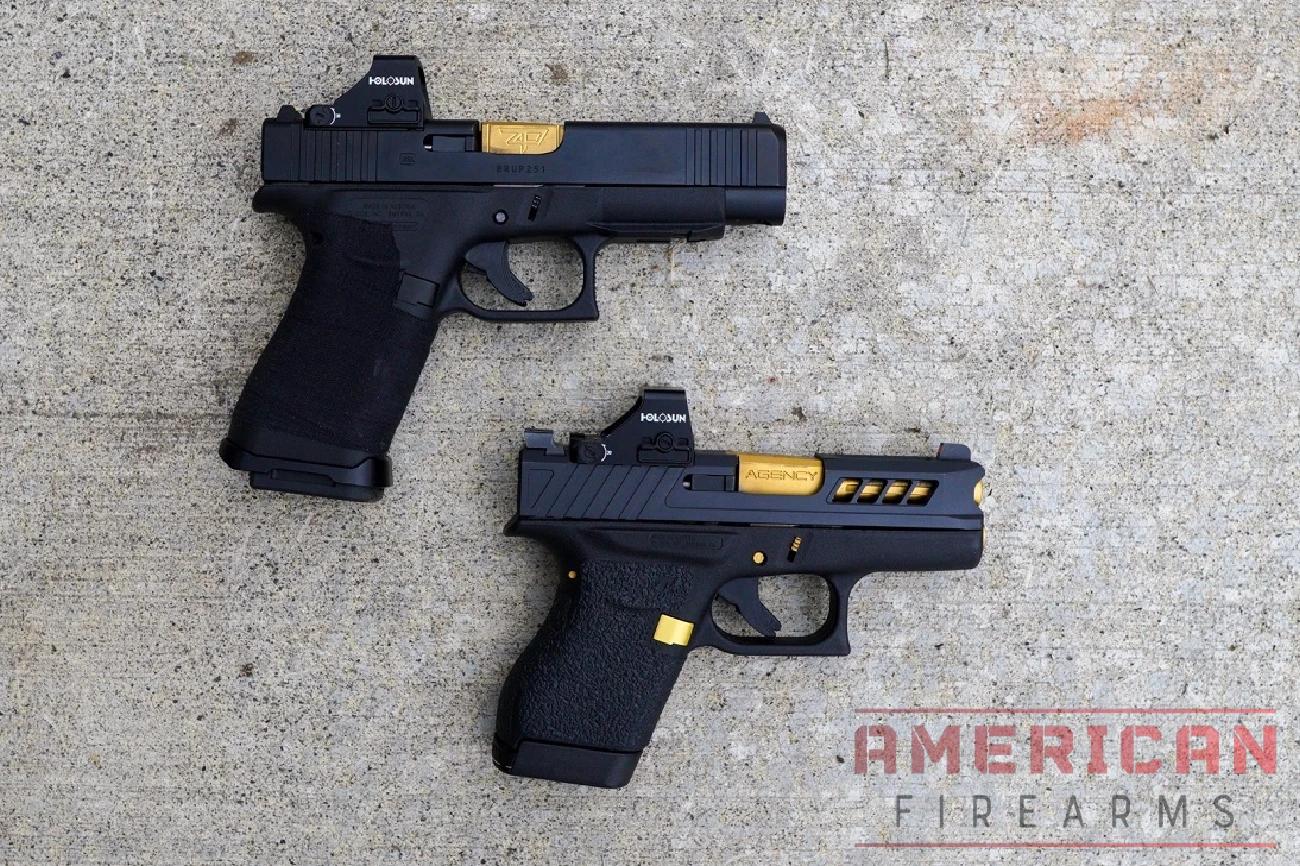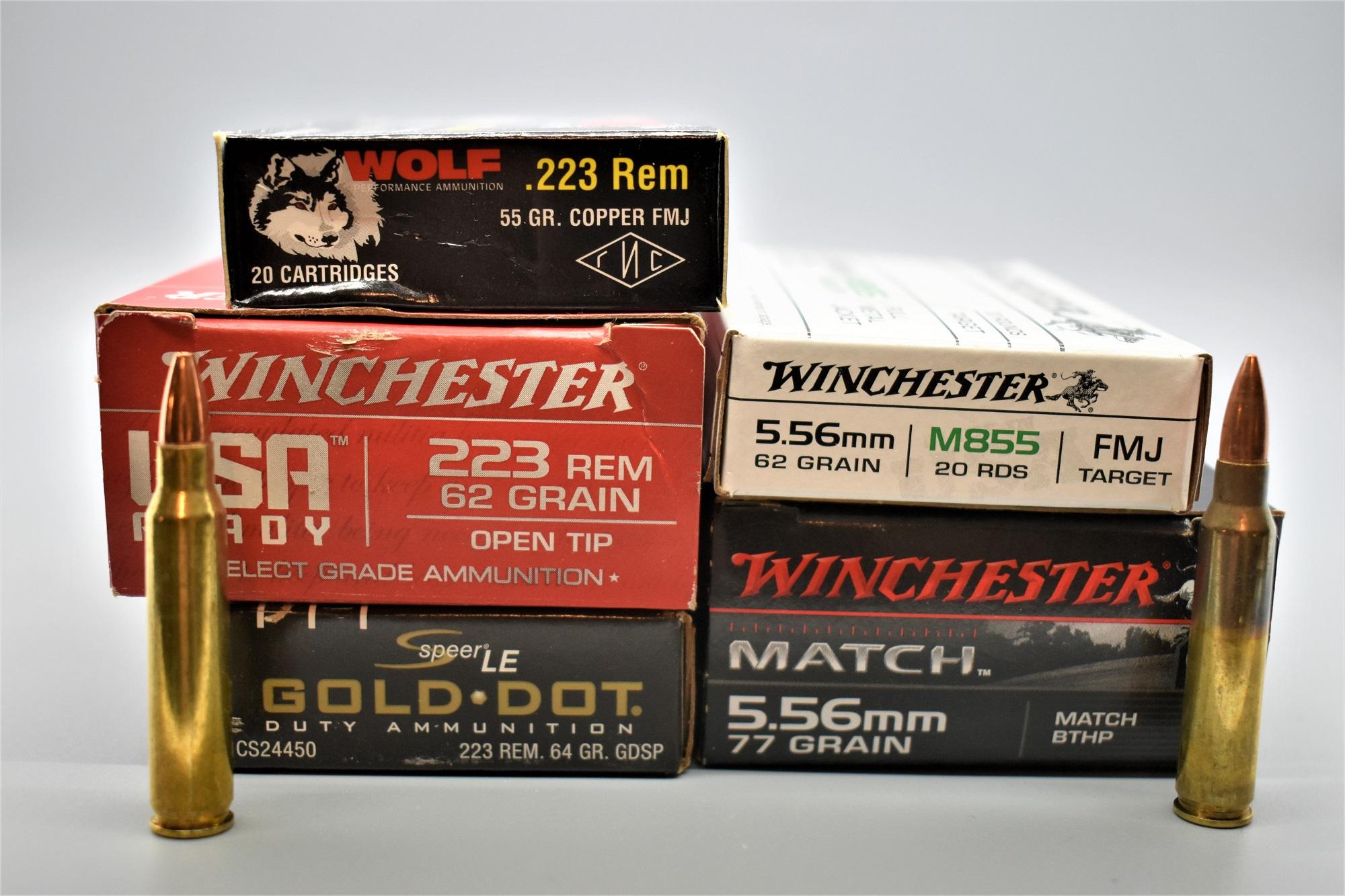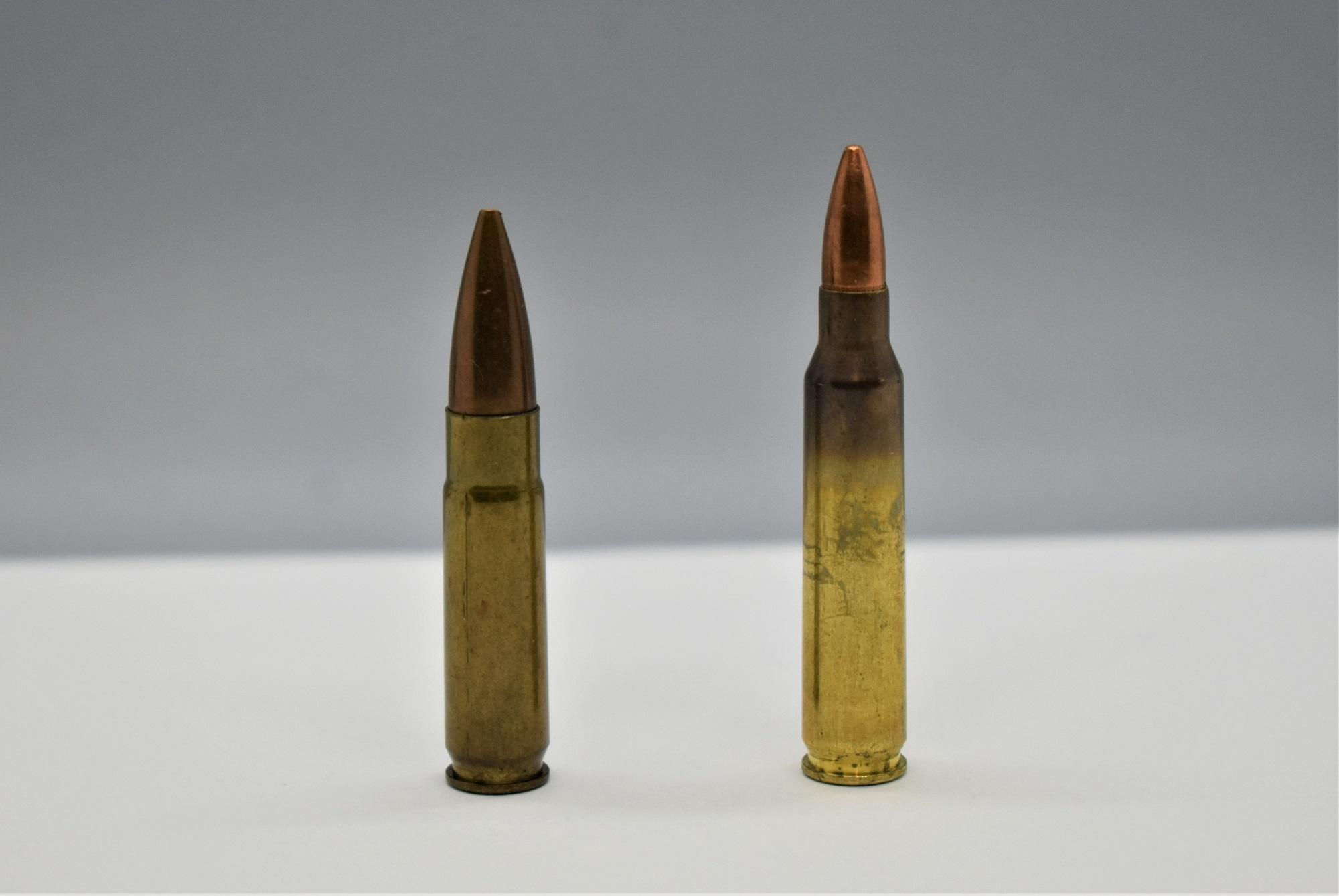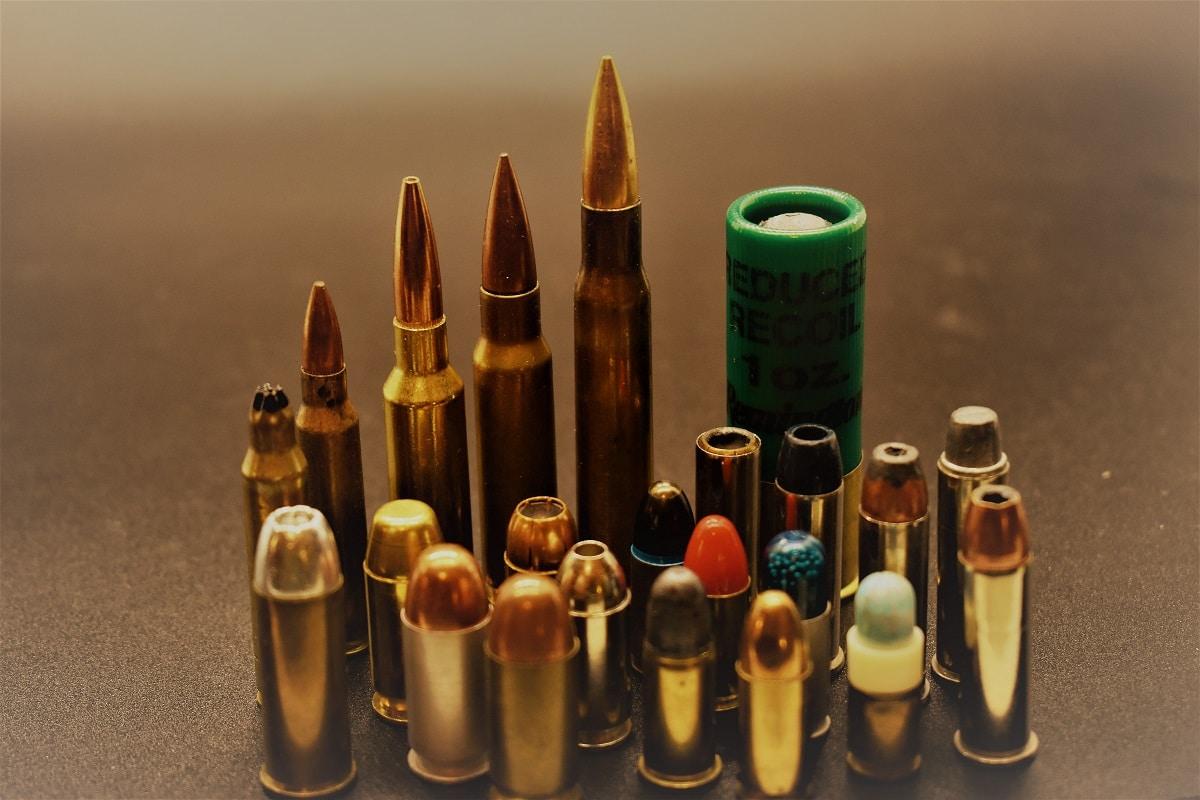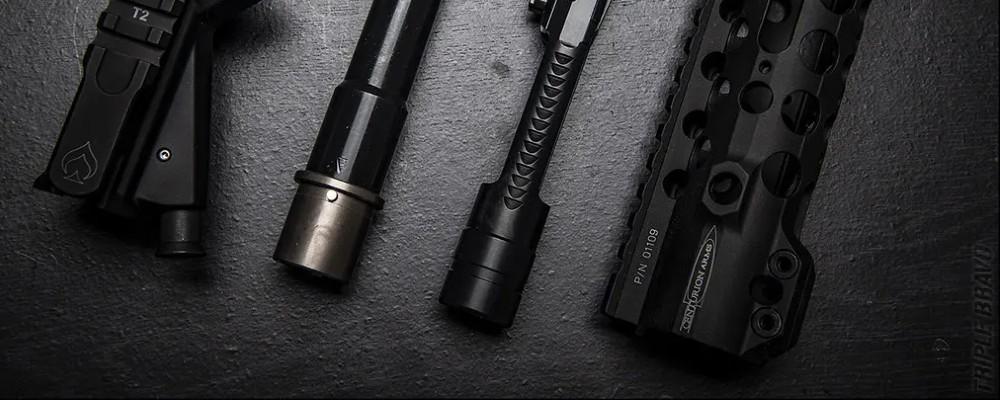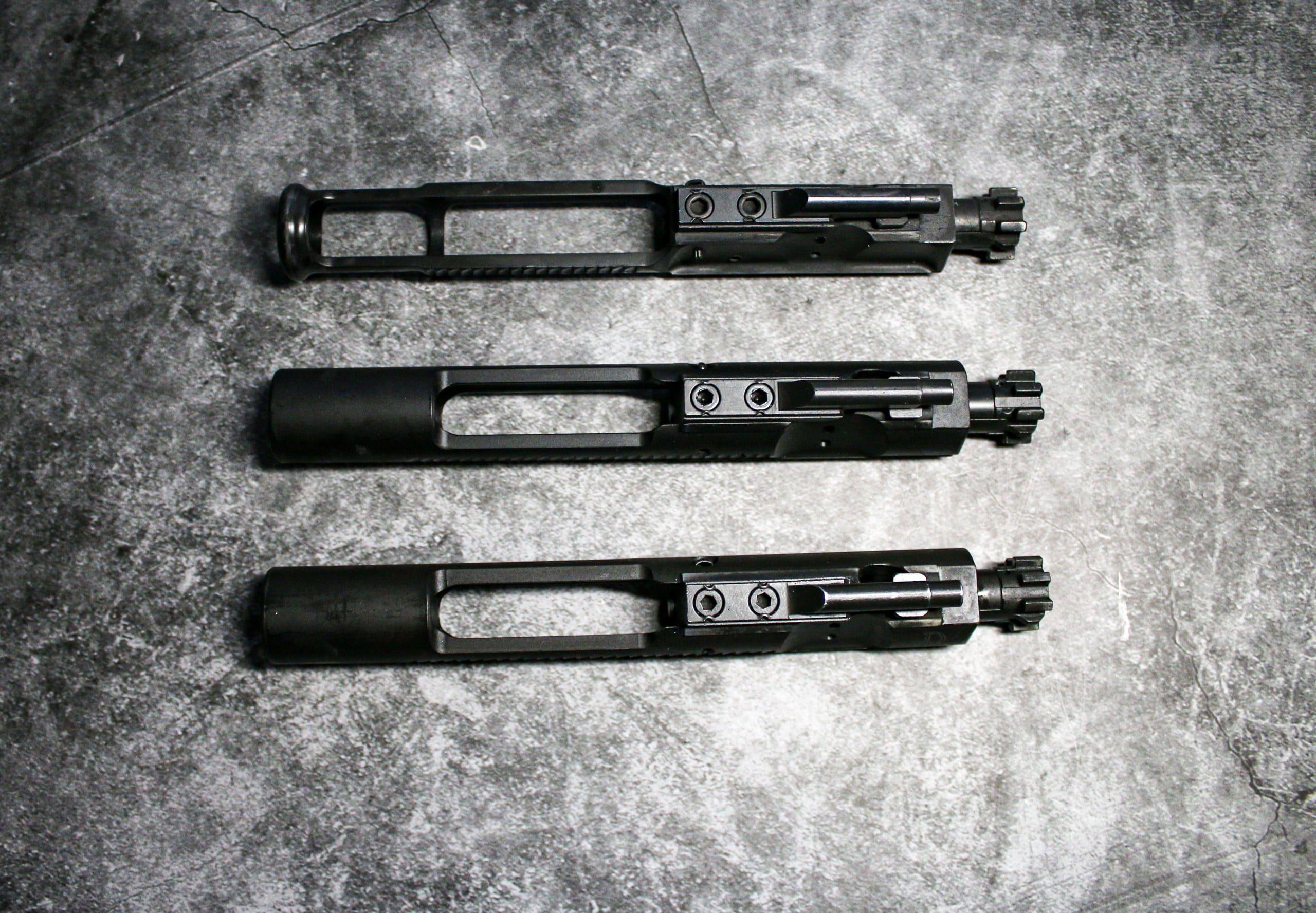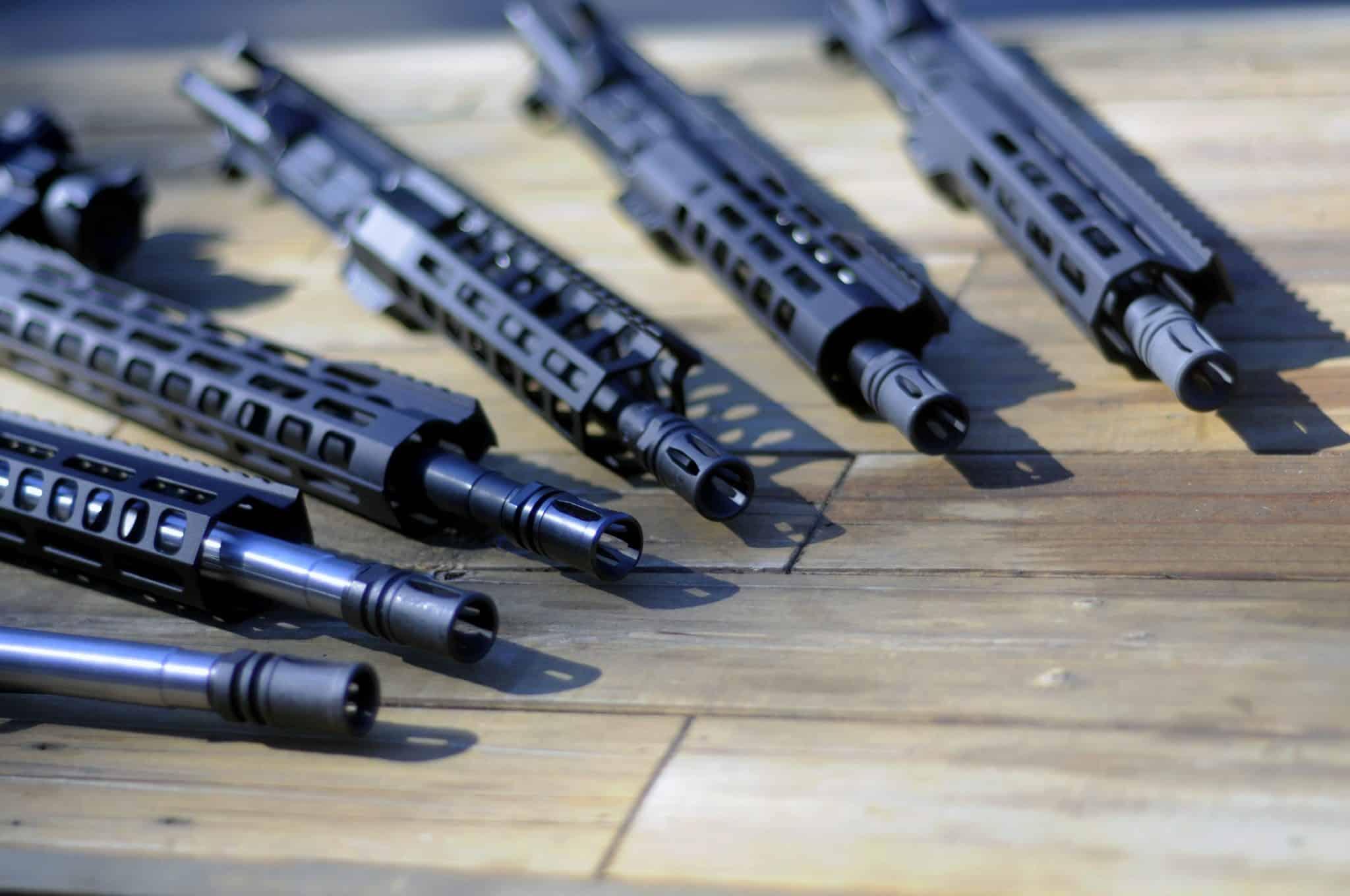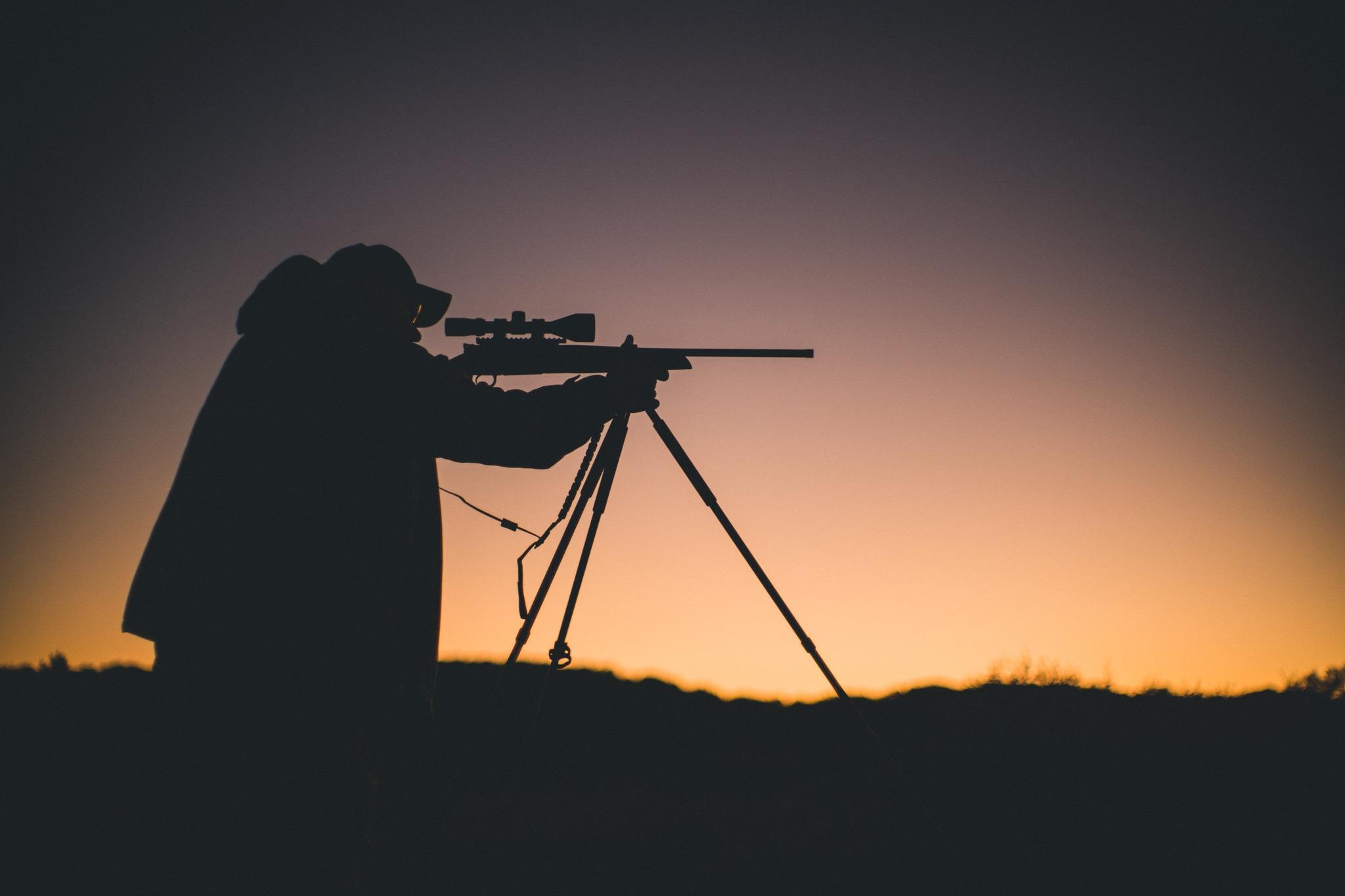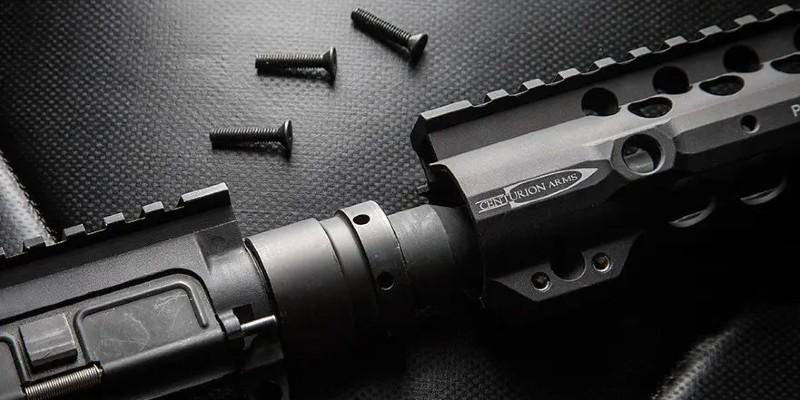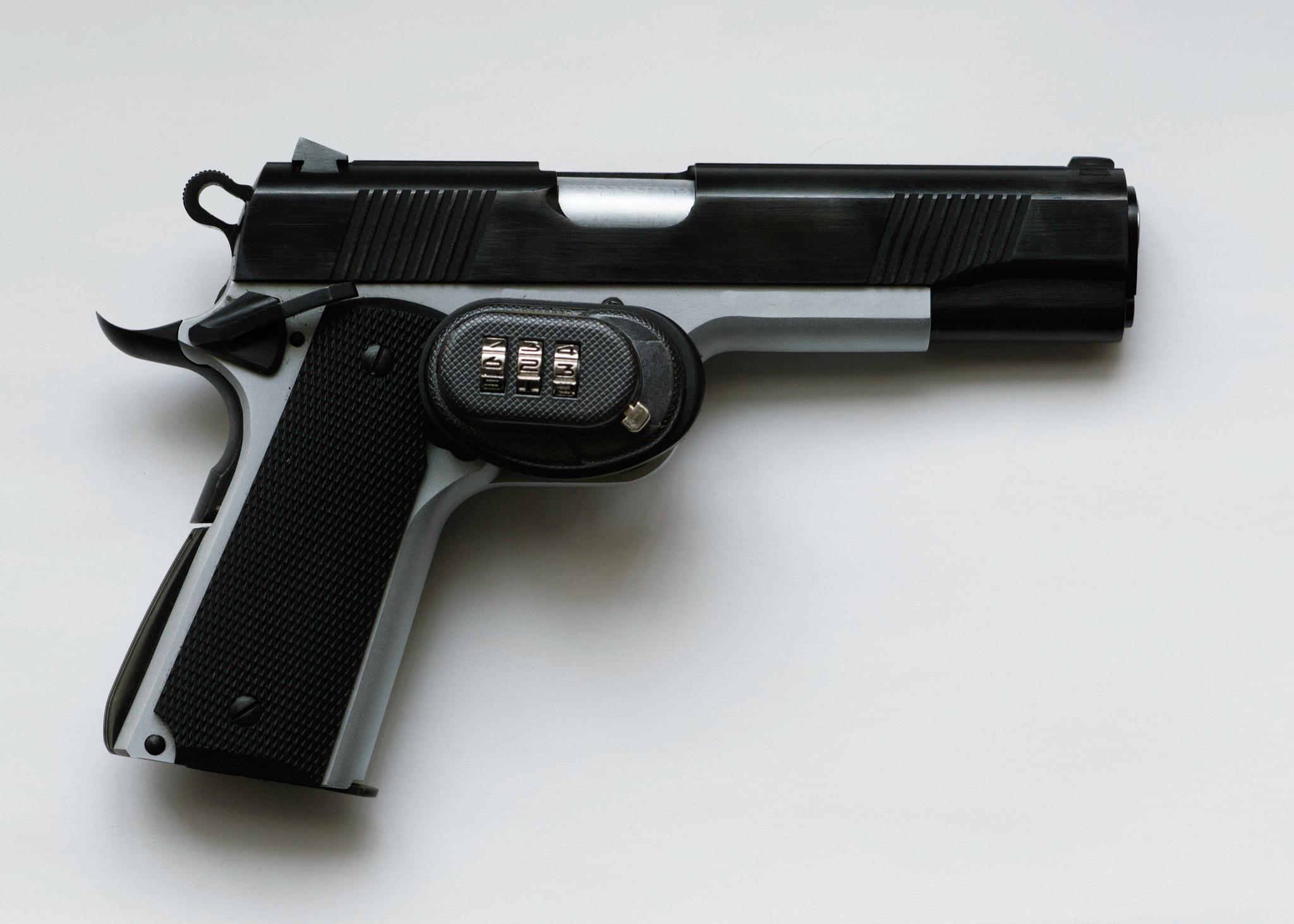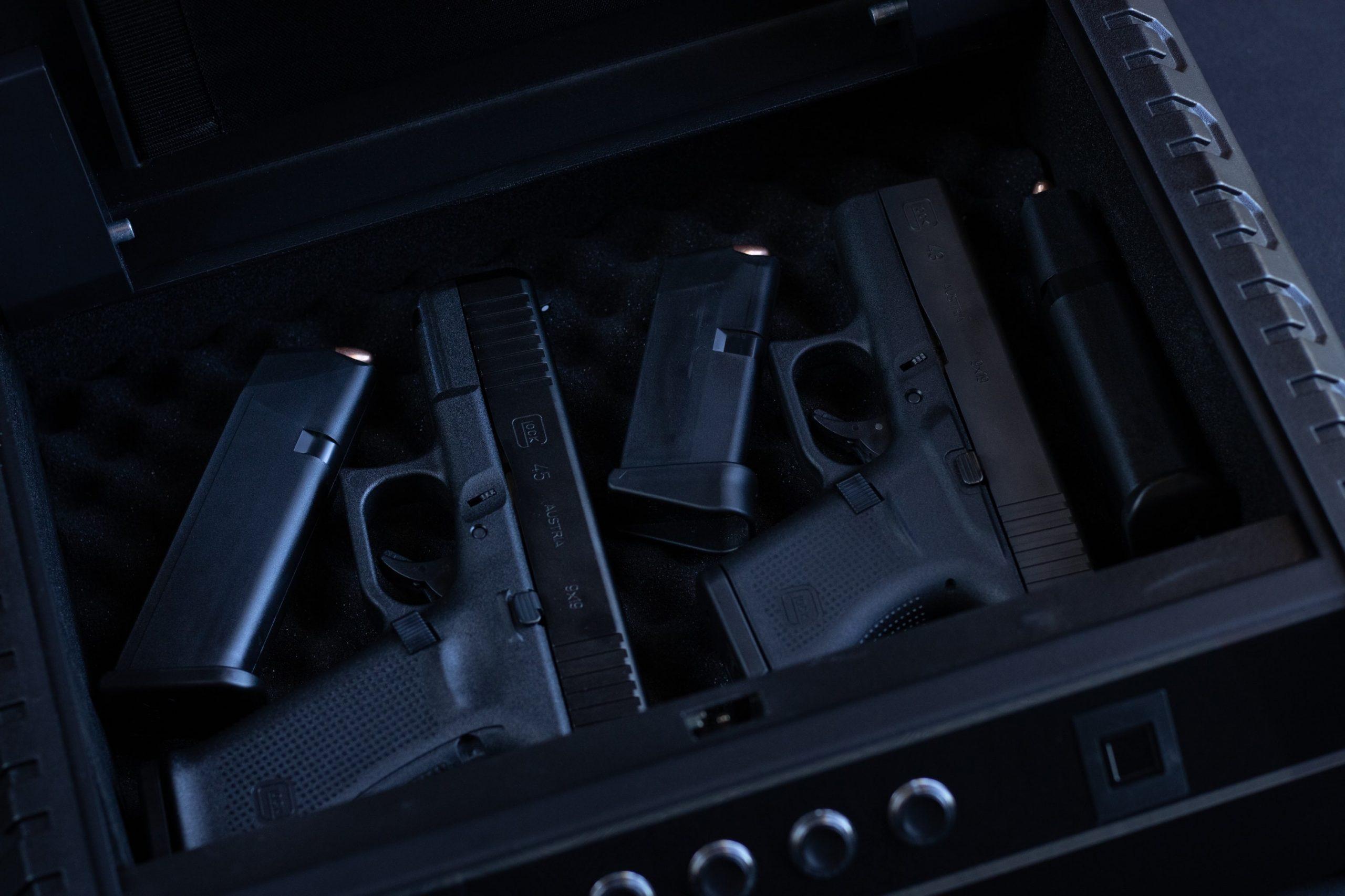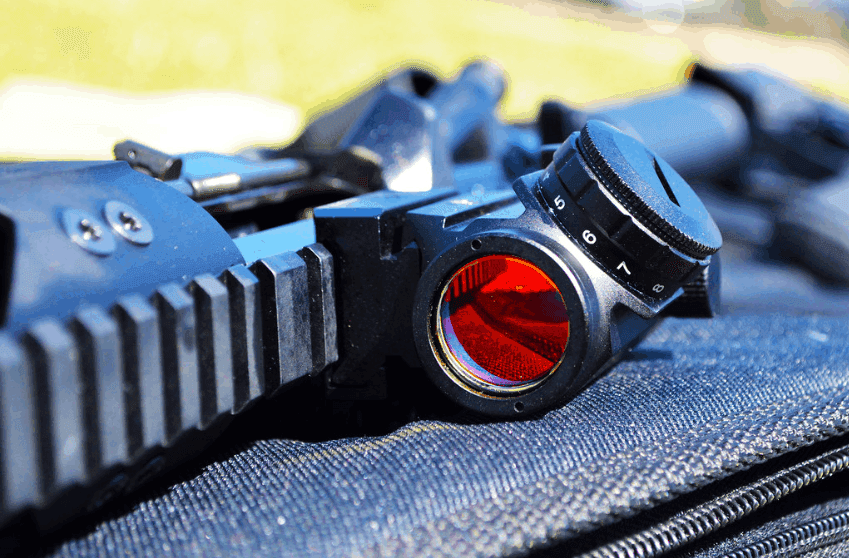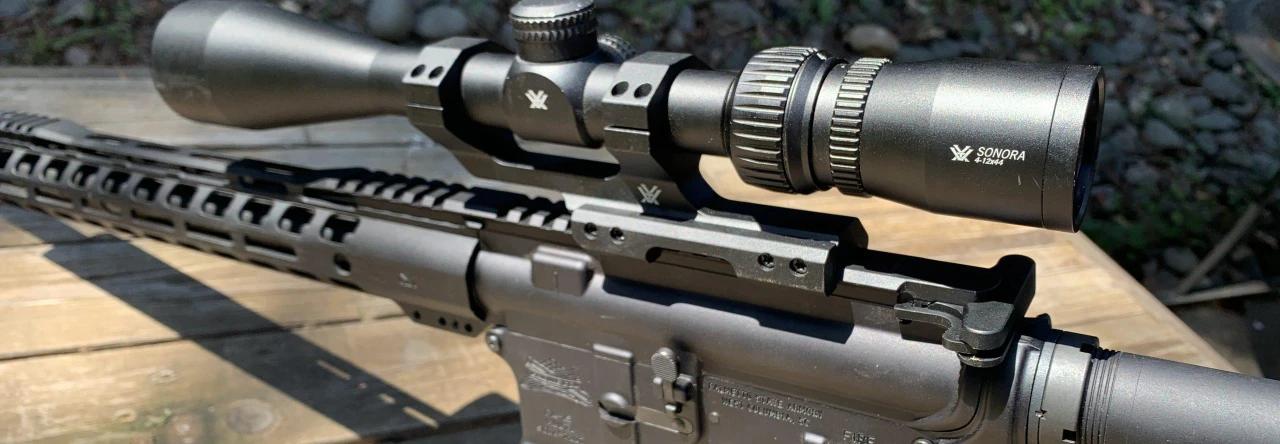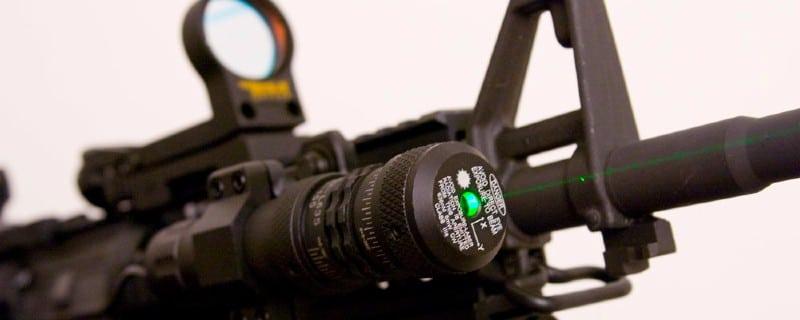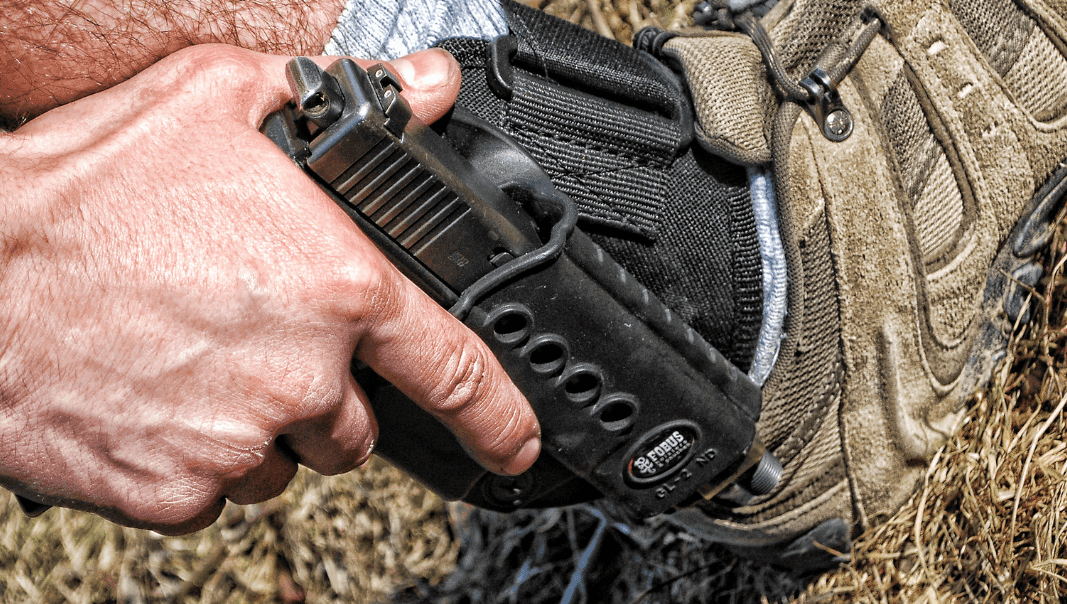TASER Pulse Review: Watt’s Up Doc
Dive deep into the TASER Pulse's design, features, and user experience. Discover its historical evolution and its place in modern personal defense tools.
Written By
Michael Crites
Licensed Concealed Carry Holder
Reviewed by
Editorial Team
Learn About The Editorial Team
Share:
Products are selected by our editors. We may earn a commission on purchases from a link. How we select gear.
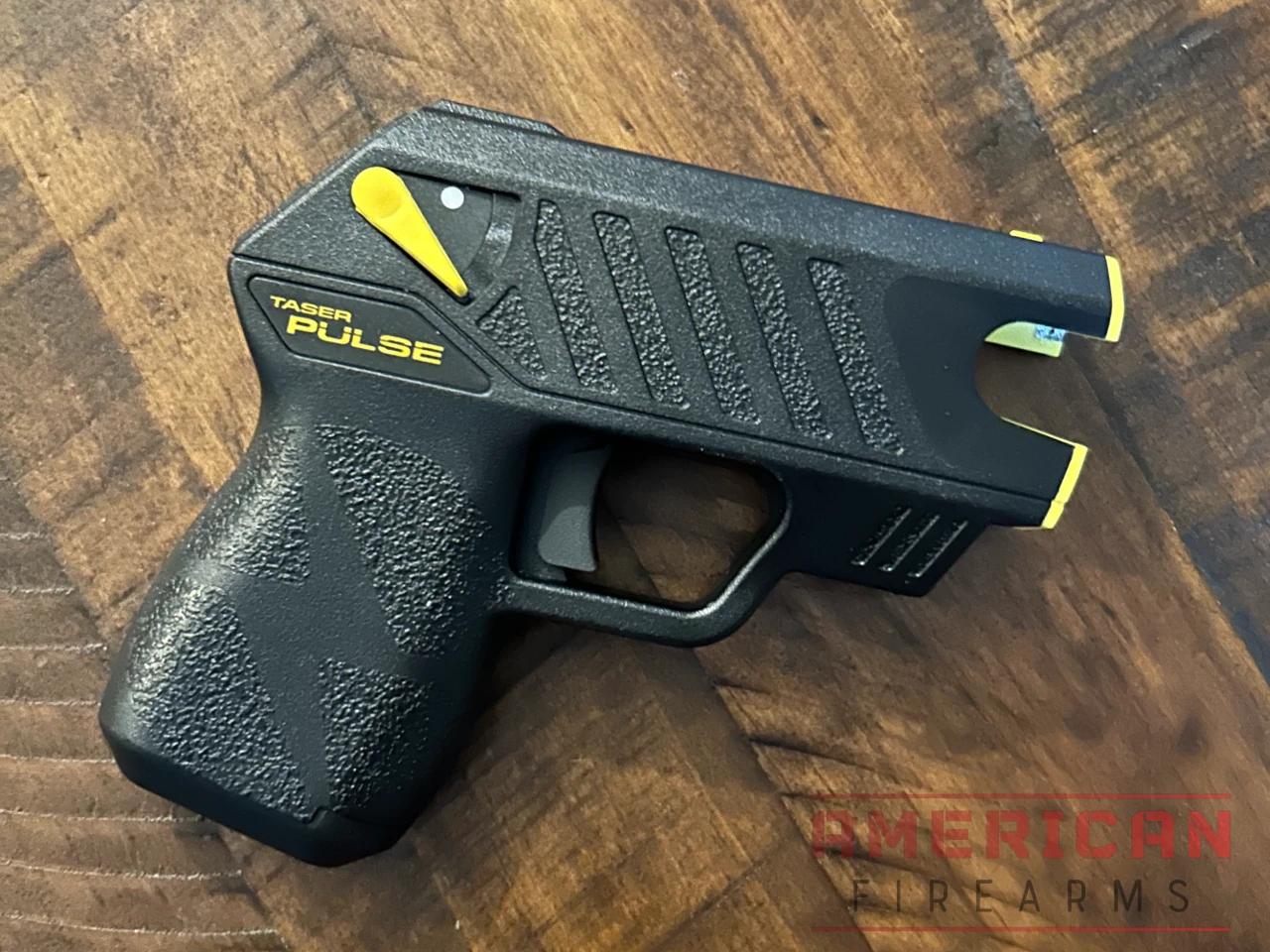
Updated
Oct 2023
The evolution from primitive weapons to modern self-defense tools has been nothing short of remarkable. Long gone are the days of relying on stones or pointy sticks — since the invention of firearms, humans have always sought better and more effective ways to protect themselves.
Enter the TASER Pulse, a less-than-lethal tool that promises safety without lethal consequences.
The TASER Pulse is designed with the civilian in mind. It offers a blend of usability and straightforward effectiveness by mimicking the dimensions of a subcompact handgun; a nod to familiar self-defense tools but with a twist. Instead of bullets, it fires two dart electrodes that deliver a jolt of electricity, causing “neuromuscular incapacitation” (say that five times fast.)
What sets the TASER Pulse apart is how light and user-friendly it is. Anyone who has shopped for a concealed carry pistol is familiar with the features that add value (compactness, a light rail, easy-to-manipulate controls, etc.), and the TASER’s integrated flashlight and laser, (which performed well in our nighttime environment tests) demonstrated the device’s adaptability to various scenarios.
Historically, the concept of a TASER isn’t new. Jack Cover, a NASA researcher, invented the first version in 1969, naming it after a book he loved as a child, “Tom Swift and His Electric Rifle” (but adding an “A” because they got tired of answering the phone ‘T.S.E.R.’). The TASER Pulse builds on the concept, refining the technology into a more approachable civilian-friendly package.
As we delve deeper into this review, we’ll explore the TASER Pulse’s features, its real-world applications, and its place in the broader context of personal defense tools.
Whether you’re a seasoned self-defense enthusiast or someone looking for a reliable safety tool, this review promises a comprehensive look at a device that might just be a game-changer.
In This Article
Product Overview
At its core, the TASER Pulse is a “civilian legal” less-lethal tool, designed with the shape and feel of a subcompact handgun.
This design choice is deliberate, providing firearm users with a familiar grip and handling experience, while also offering those compact pistol benefits to those who have never handled a firearm.
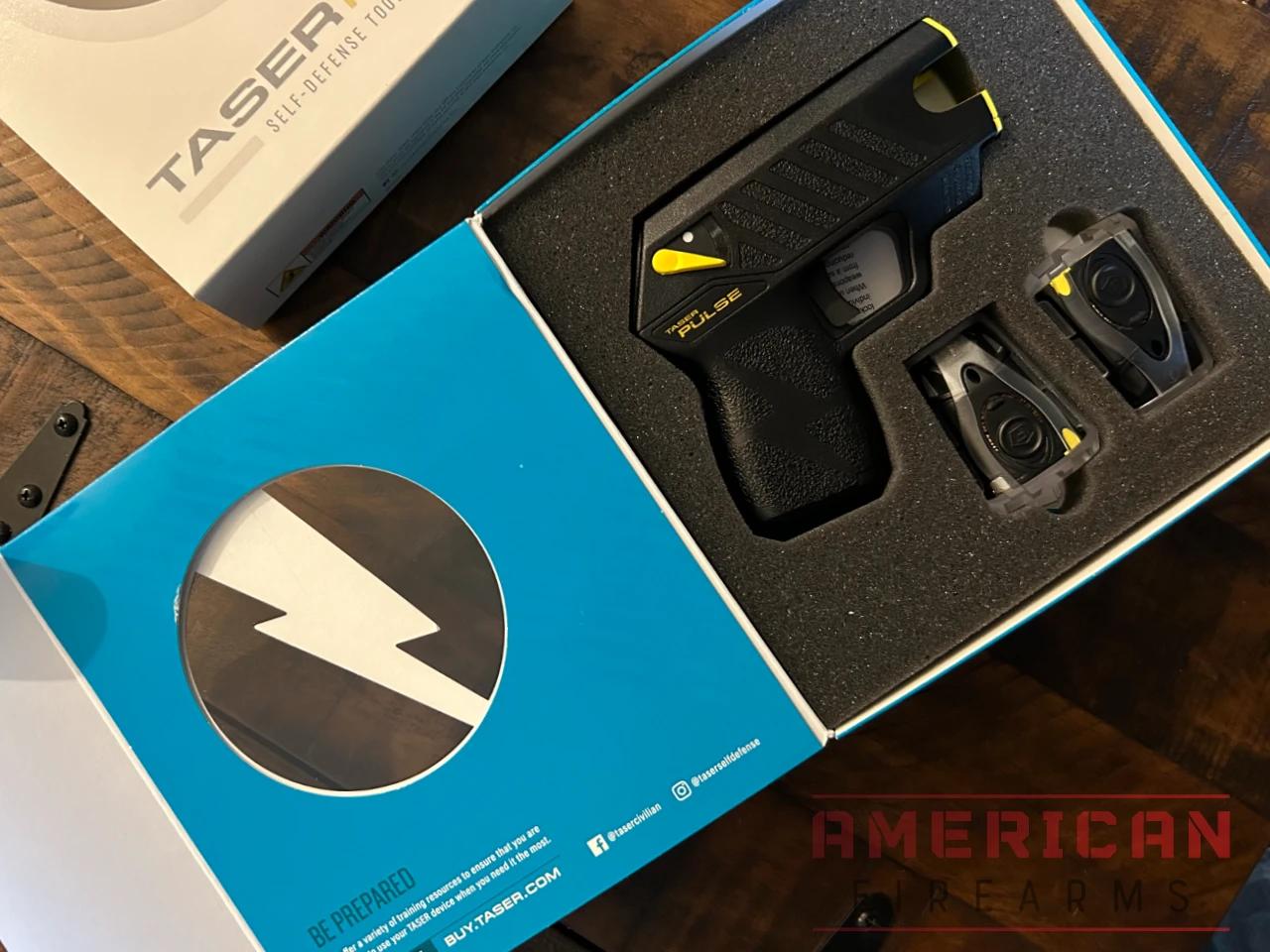
However, unlike traditional firearms, the Pulse deploys two dart electrodes that deliver a controlled electric shock, incapacitating threats without causing lethal harm.
My wife, for example, has always carried a deterrent spray but hasn’t been comfortable with carrying a firearm. She was excited to hear about the Pulse, which she felt was less intimidating than a firearm but more effective than a spray, which requires an assailant to get close and can backfire.
You get two dart cartridges with the TASER, with the cartridges are housed in a clear polymer exoskeleton case. Also in the box is a paper practice target and the instructions.
Once you pry a cartridge free from its case, inserting it into the front of the Pulse is straightforward. There are two clear grab points on either side of the cartridges to compress the retaining tabs which slide home with a satisfying “clunk.” Press the tabs on either side of the cartridge to remove it. An ambidextrous safety lever activates the unit and engages the light and laser.
For those familiar with firearms, the Pulse’s size is comparable to that of a Glock 19, offering a compact yet effective defense tool.
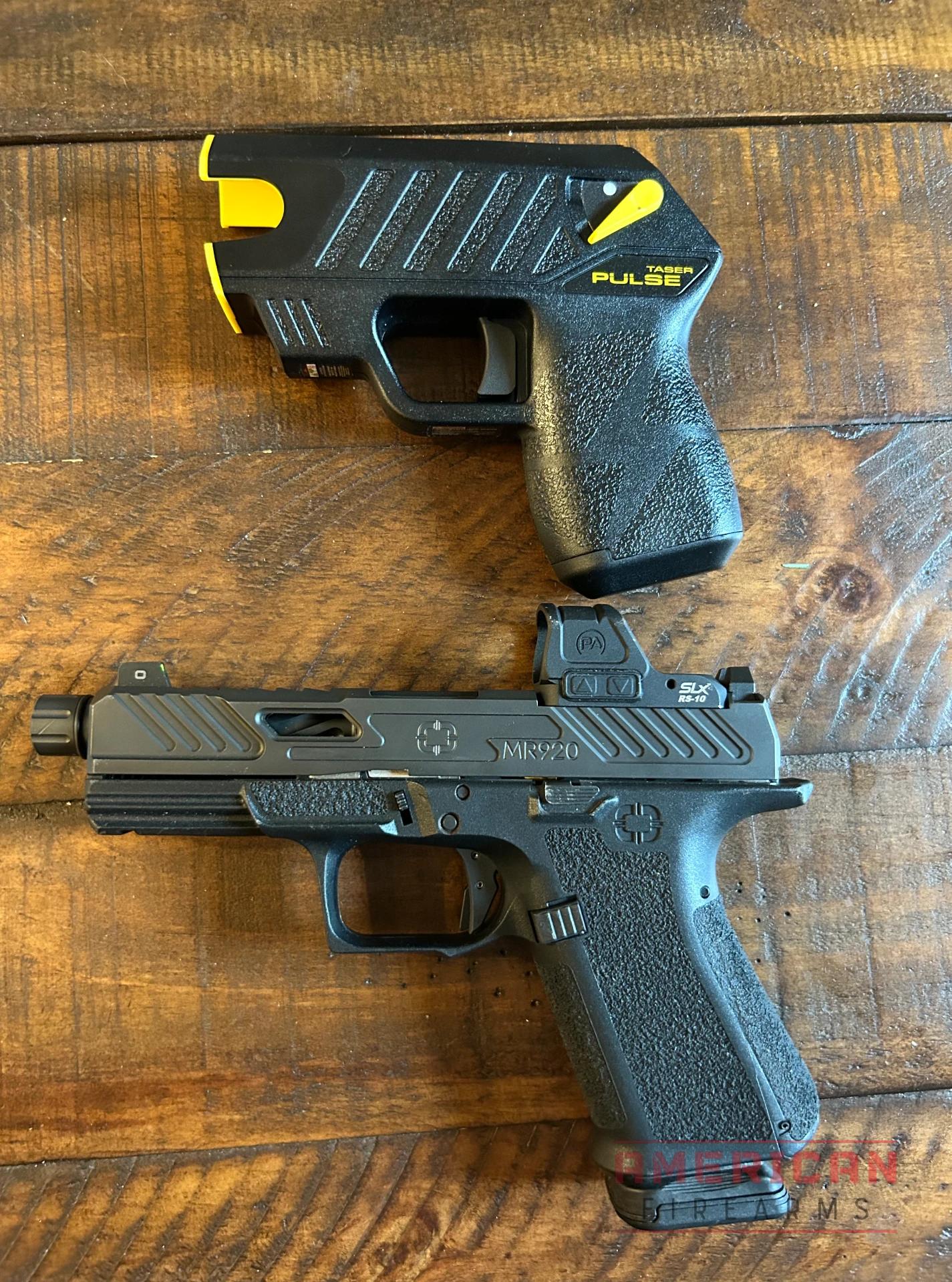
One of the standout features of the Pulse is its trigger. The thing is super light and has almost no travel. My scale had it coming in at 8 ounces to 1 lb., and the actuation is more like a switch than a traditional trigger.
There’s clearly no trigger bar or spring — a trigger pull activates a switch — there’s no sear, striker, hammer, or spring pressure, so the pull is practically instant. If you’ve ever played paintball the Pulse trigger will feel familiar.
However, like all tools, the TASER Pulse is not without its challenges. Its effectiveness can be compromised by thick clothing, and both probes need to make contact with the target to deliver the electric shock.
Additionally, while the Pulse’s laser is visible indoors, but can be tough to see in bright daylight. Due to its relatively short effective range of 15 feet, users need to be aware of the probe’s spread and trajectory, especially if attempting unconventional shots or in a rush, which means practicing with cartridges that will cost you more than $20 each.
Features & Specifications
As I delved into the TASER Pulse, I was immediately struck by how light it is, the compact design and the solid features packed into such a small device.
Let’s break down the key features and specifications that make the Pulse stand out in the realm of personal defense tools.
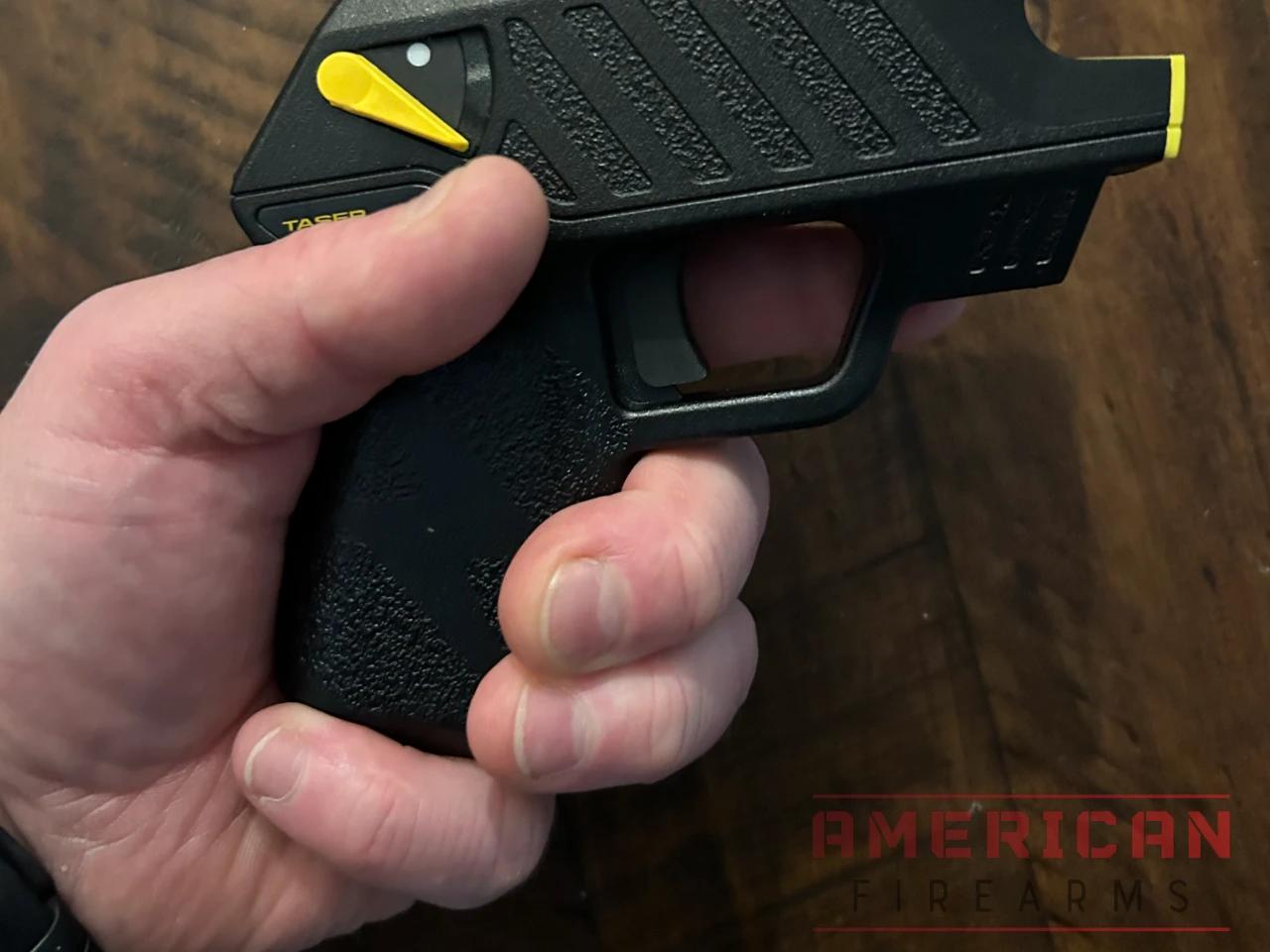
Cartridges & Design:
The Pulse includes two cartridges, neatly housed in a clear polymer exoskeleton case. Removing the cartridges from the cases takes some effort, which makes sense — you don’t want them falling onto the floor — but I don’t like that it takes both hands to free them.
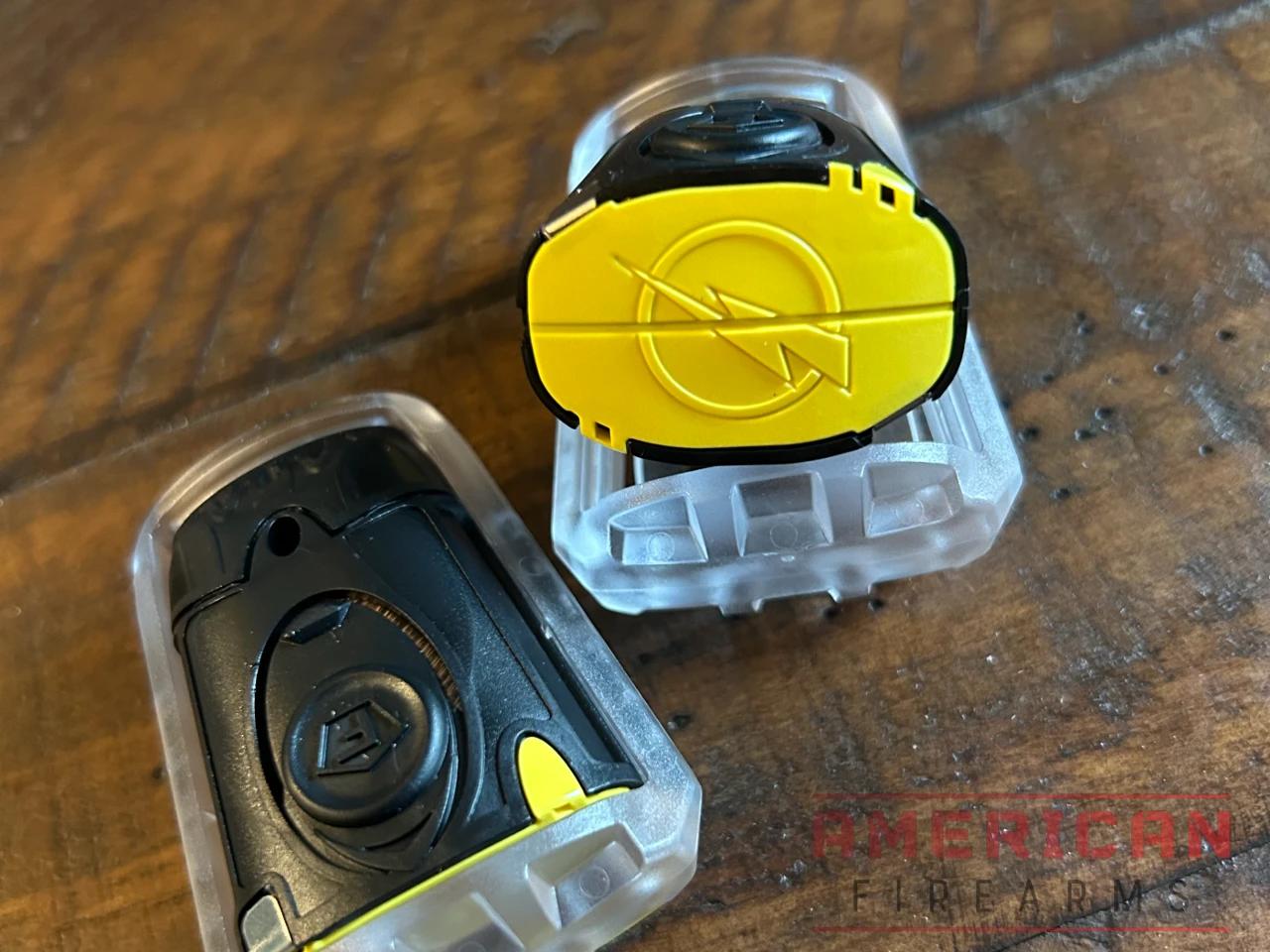
The cartridges use two tabs at the sides to lock into the front of the unit, which can be pressed to remove the cartridge.
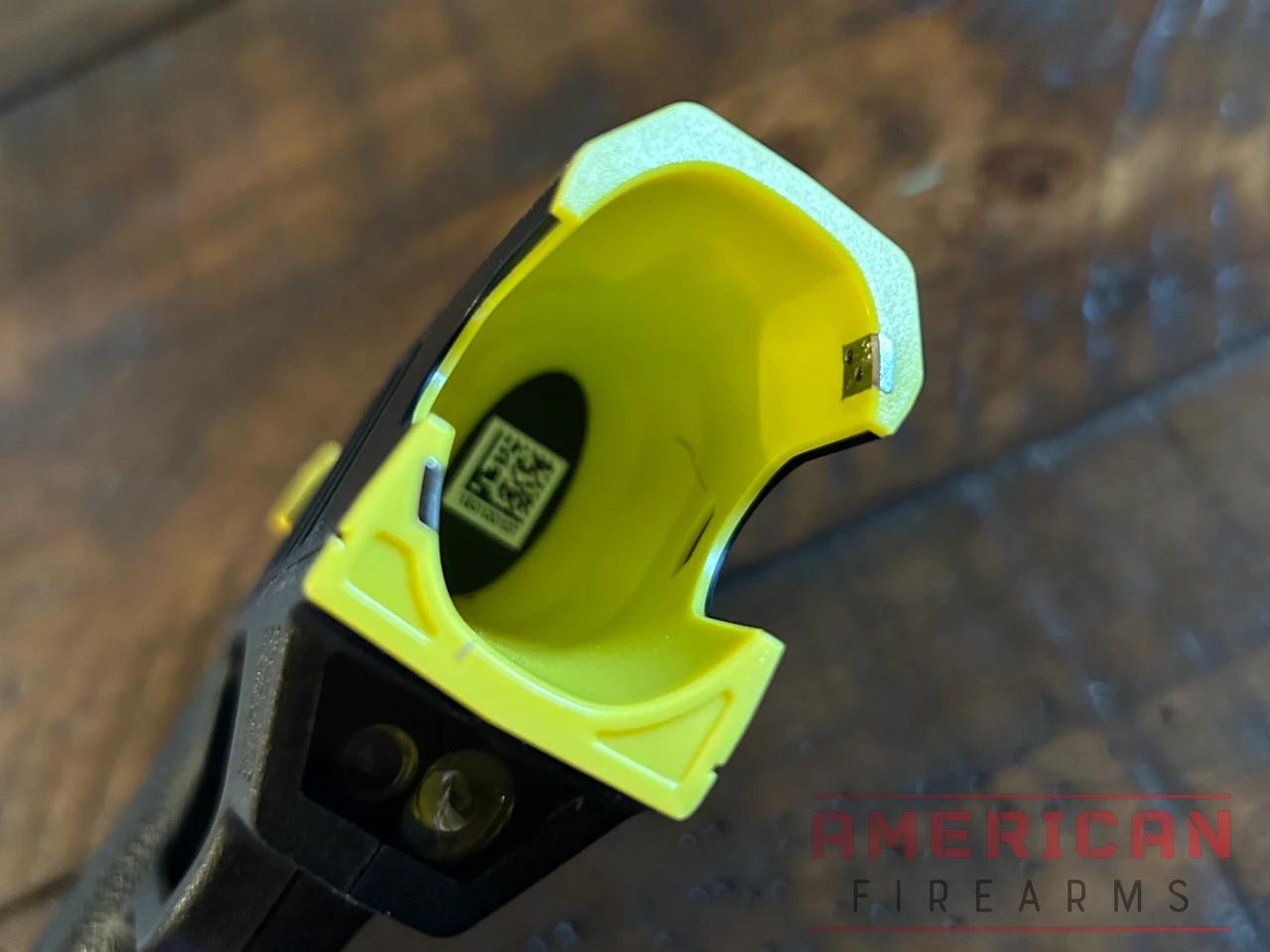
Once free they are easily inserted into the front of the device, making it ready for action.
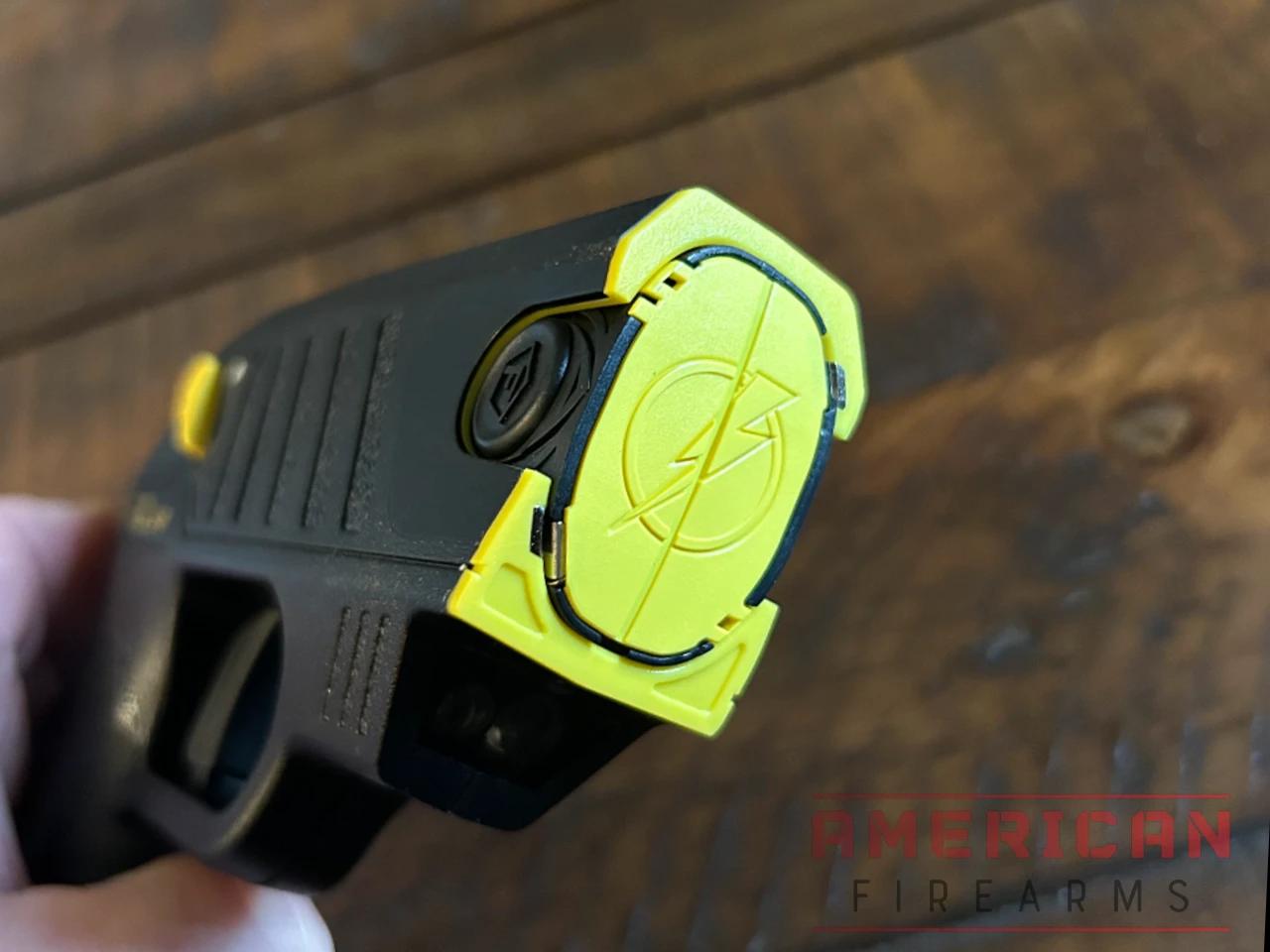
Sights & Laser:
The molded polymer sights feel a lot like what you might find on an LCP or early-gen subcompact.
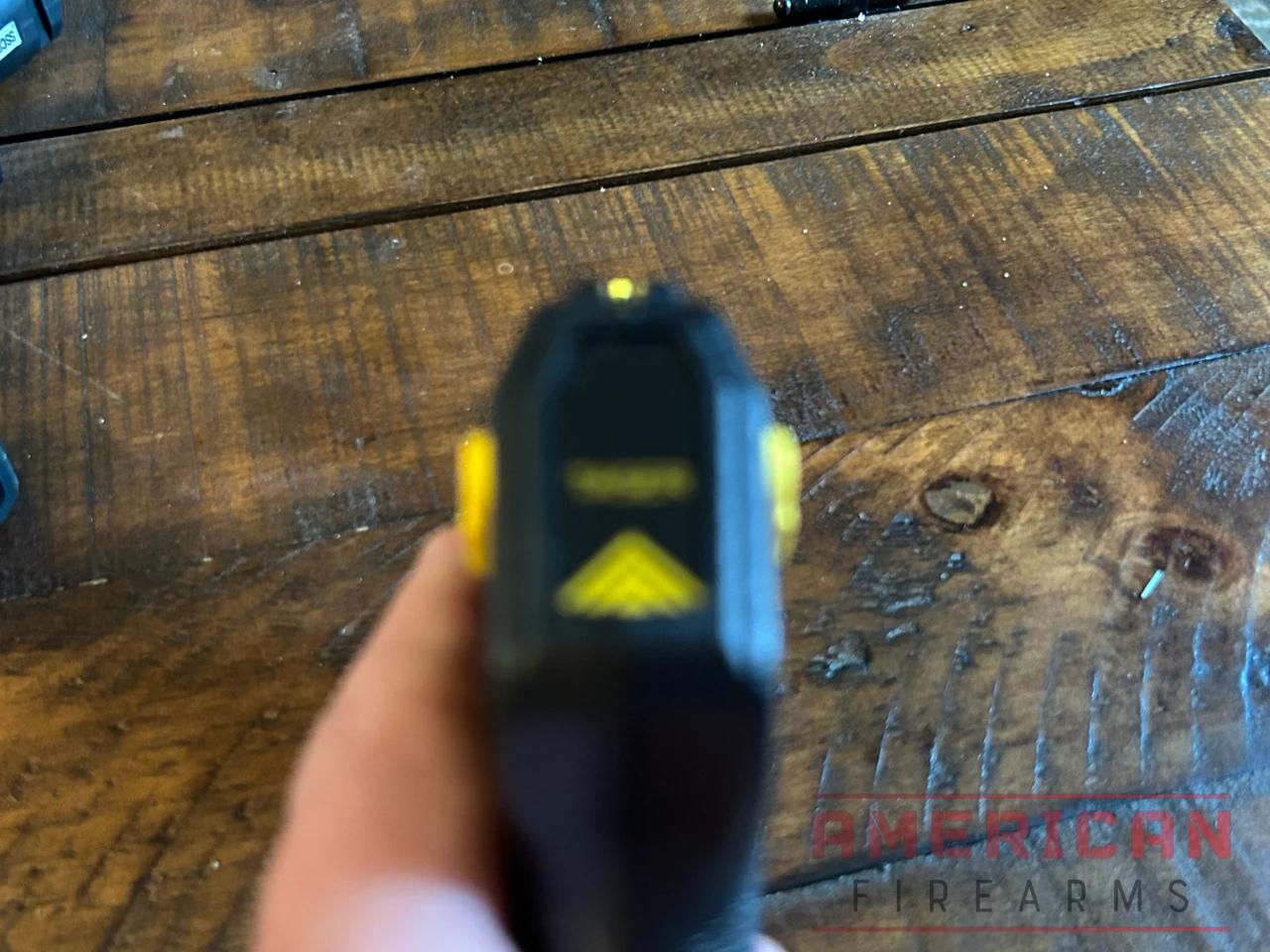
The bright yellow front sight offers a clear contrast to the black integral notch rear sights, but they’re very low on the unit, making it tough to get a clear sight picture quickly.
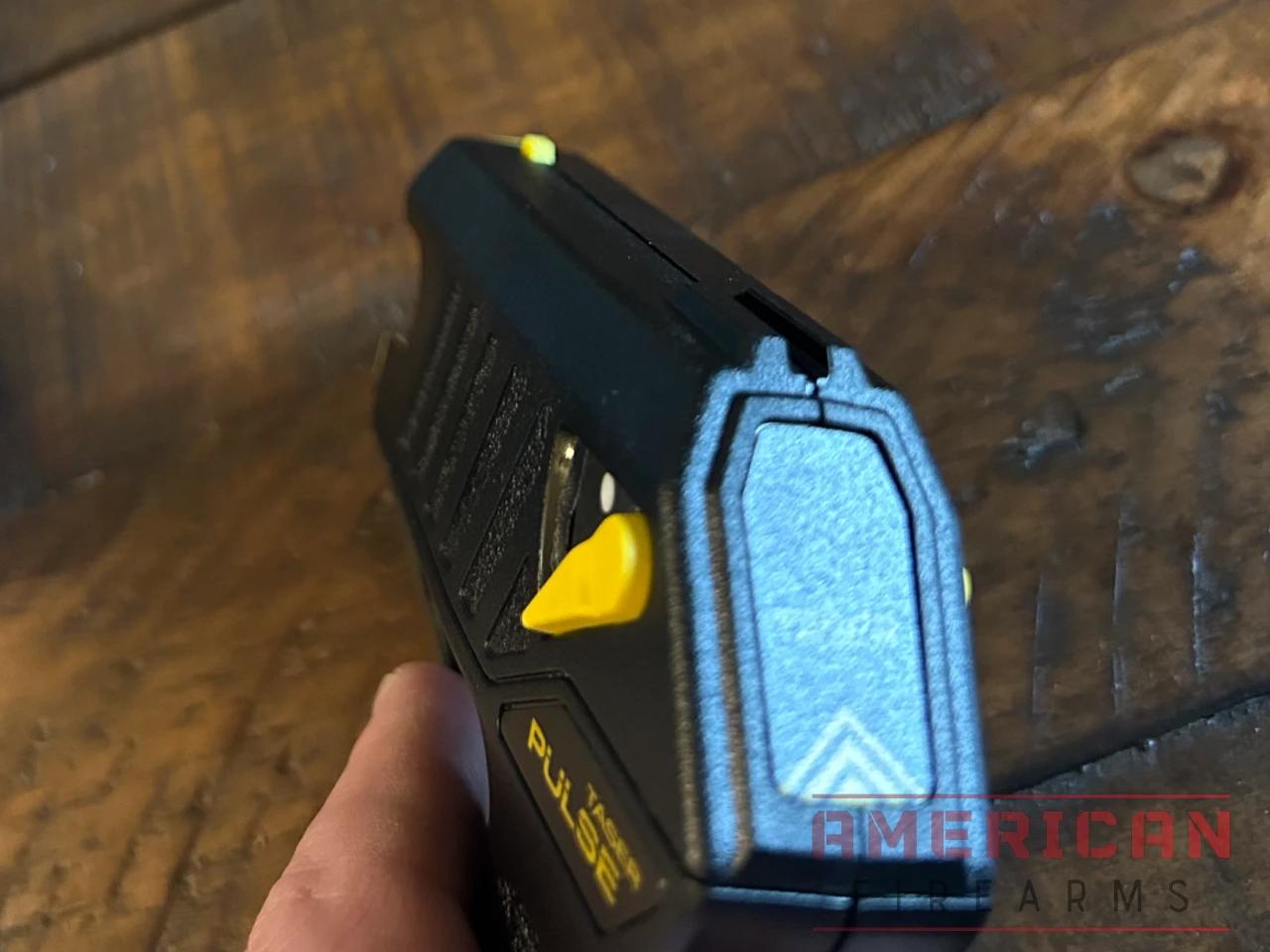
They’re also non-adjustable, but that’s not a must-have when you’re talking about 15 feet of effective range.
I found that the integrated laser often became my go-to for targeting. Historically, lasers in personal defense tools were pretty gimmicky, but with the Pulse, it’s clear that the laser serves a true purpose — it’s well aligned with the sights and illuminates when you activate the unit, so it naturally becomes your point of aim.
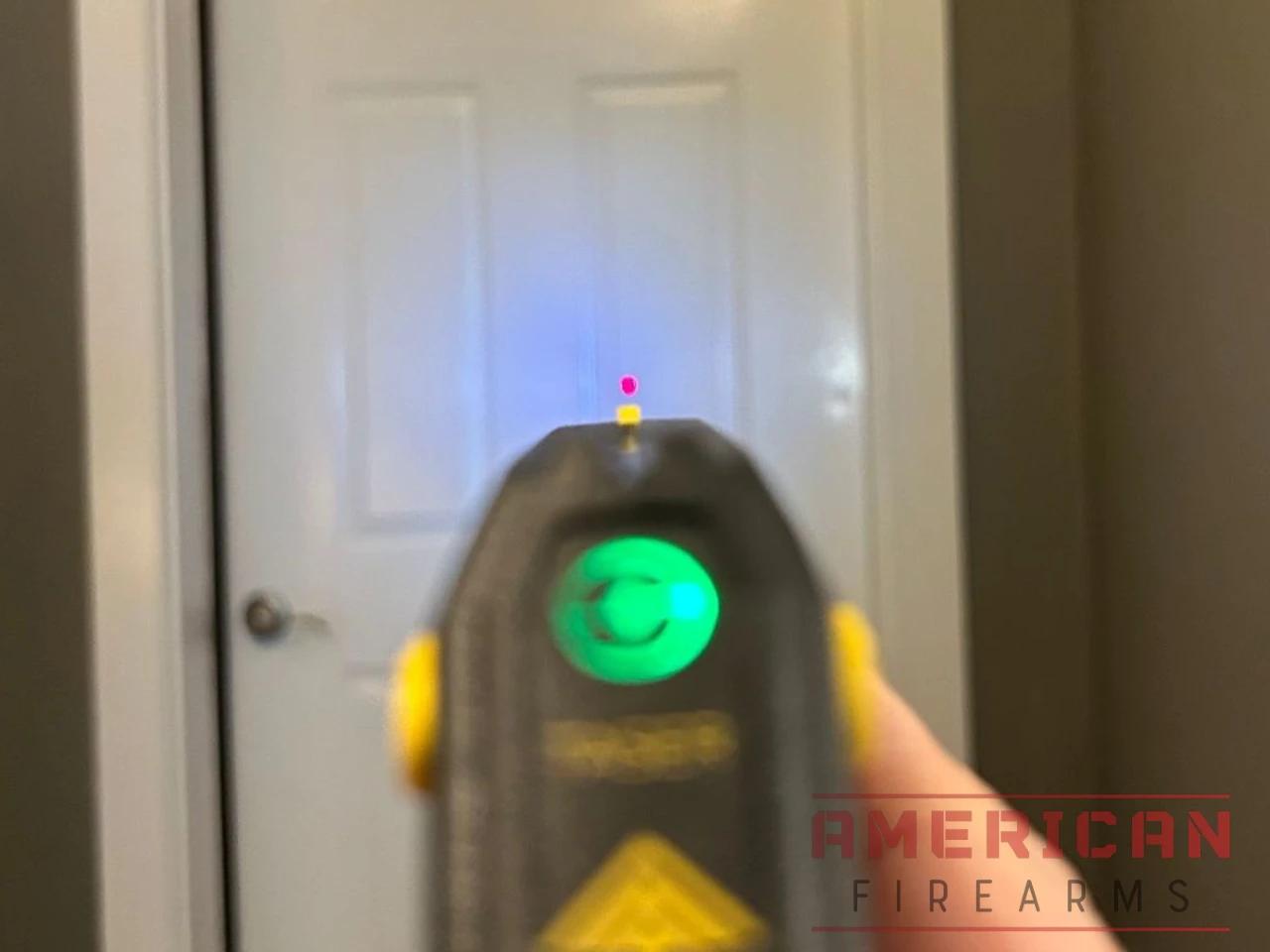
You’re not going to get 100 yards of visibility out of it, but that’s well beyond the Pulse’s 15 foot range anyway.
LED Light:
While the LED light might not be the brightest on the market, it does its job. It provides enough illumination to identify a potential threat in low-light conditions, and I found it was bright enough to clearly illuminate a hallway, bathroom, or medium-sized room.
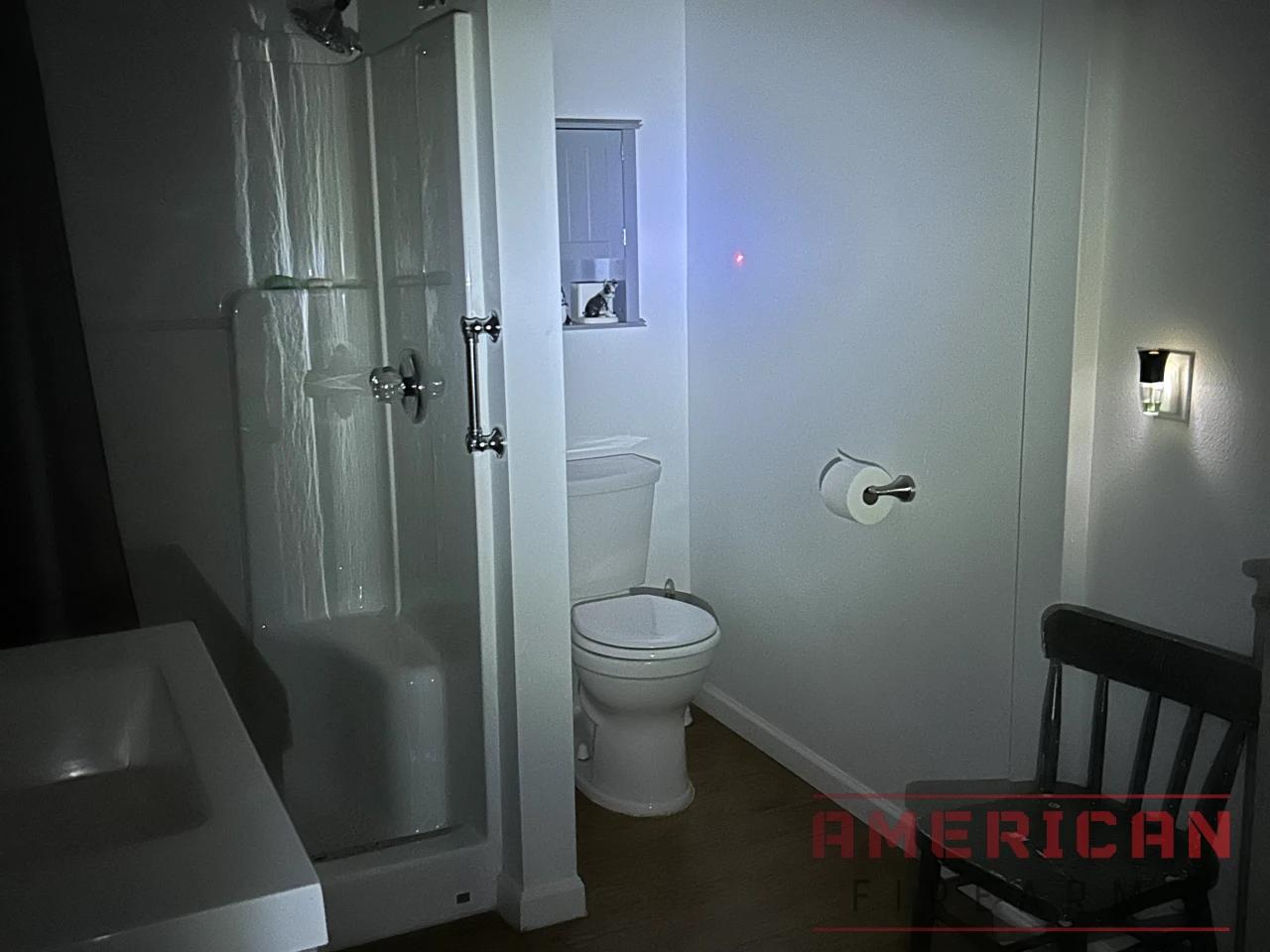
A larger room or garage will only be lit up about 50%, meaning you’ll need to stay aware if transitioning from a small space to a larger one.
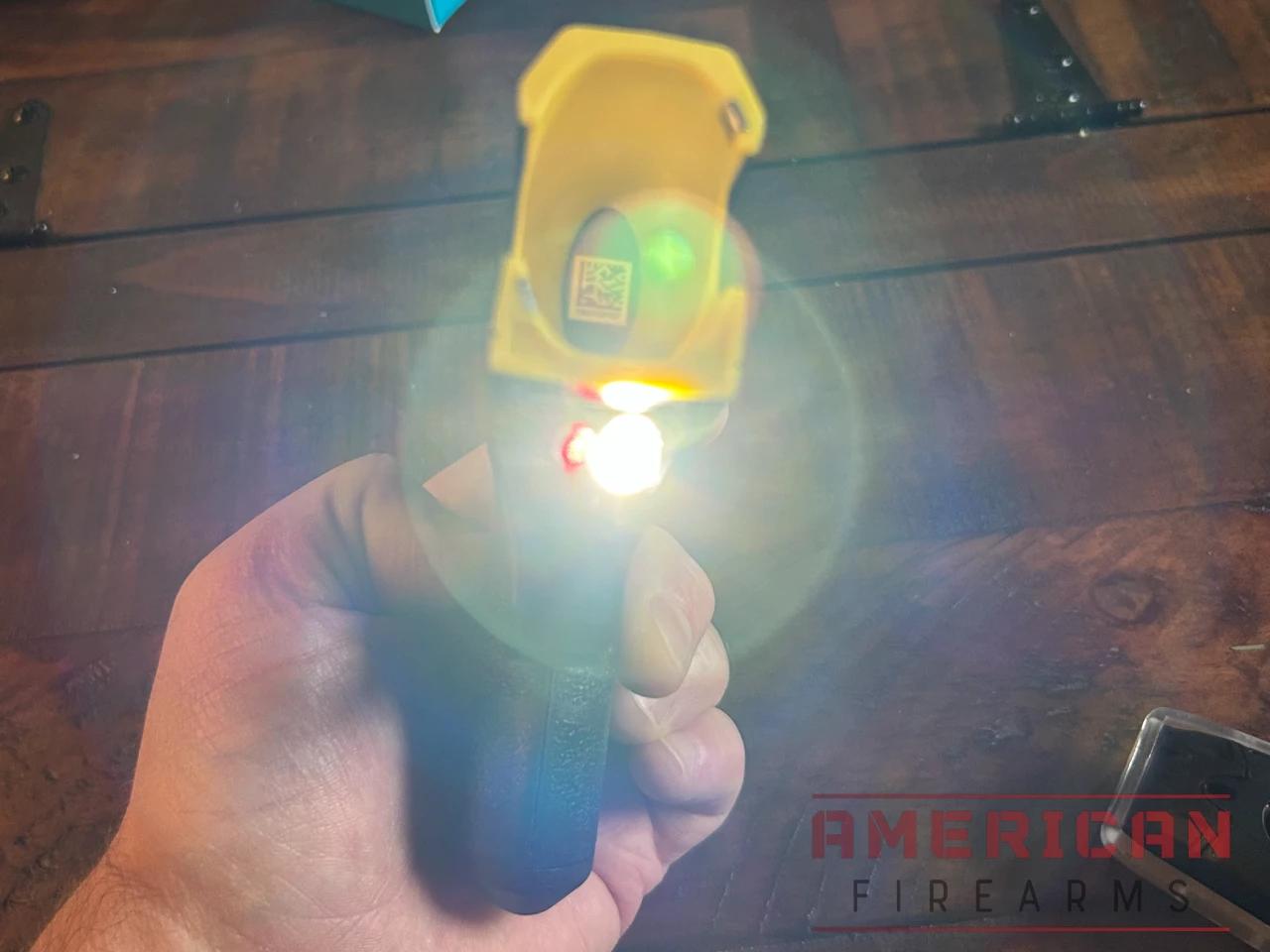
The light is bright enough to be irritating to an assailant but isn’t powerful enough to fully blind someone.
Battery & Status Indicator:
At the rear of the unit is the battery status indicator, a feature I found particularly smart.
It lights up when the unit is activated, making it easy to check before you holster the unit and head out. Clearly, the last thing anyone wants is to discover the battery is out of juice when you need it most.
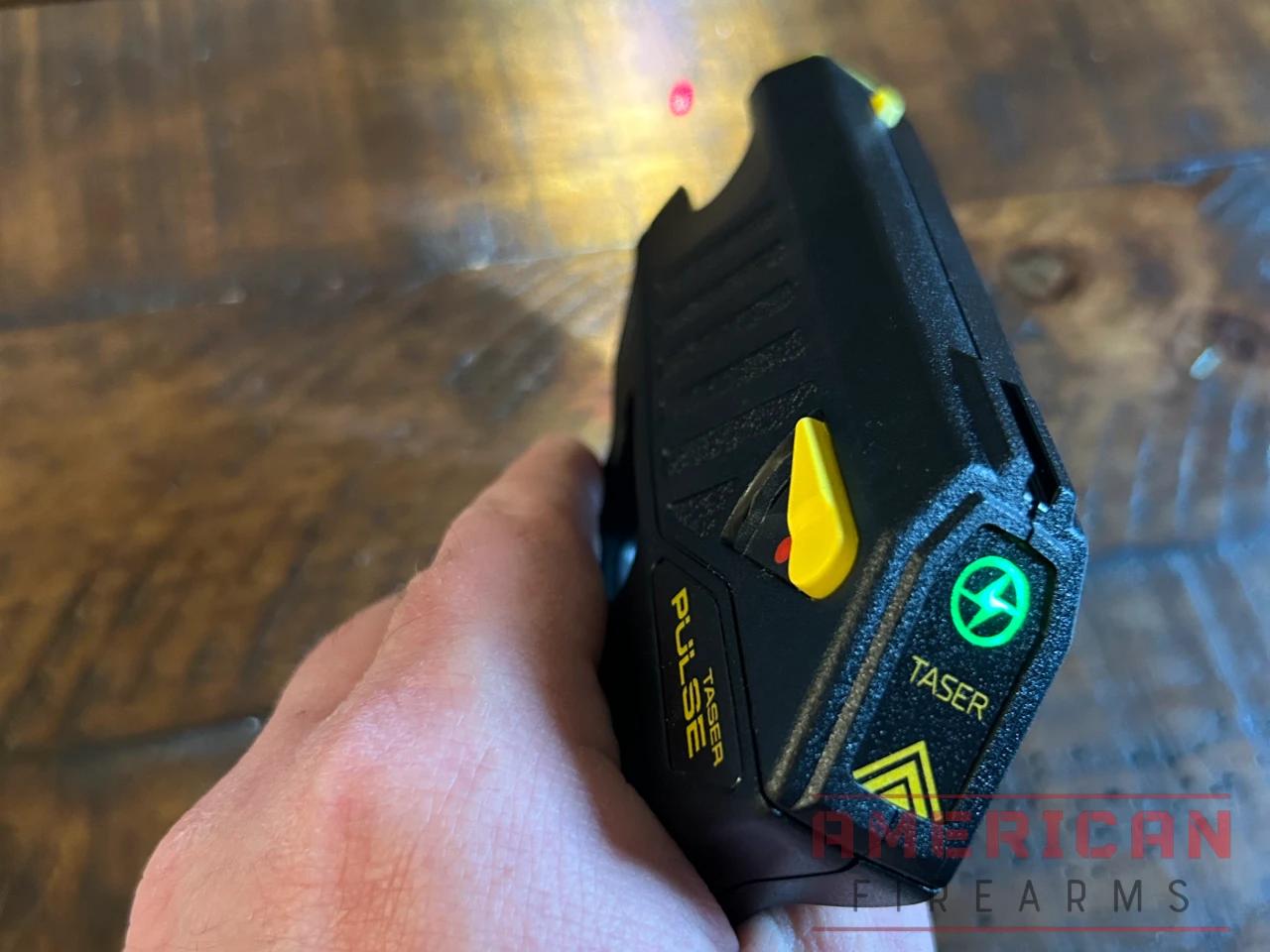
I’m conflicted about the battery itself. The Pulse is powered by a small, non-rechargeable lithium battery stored in the grip, that is said to last 50 firings or 2 years.
On one hand, I appreciate the simplicity of the “one and done” approach — you don’t *need* to really think about the battery unless the charge indicator tells you it’s running low.
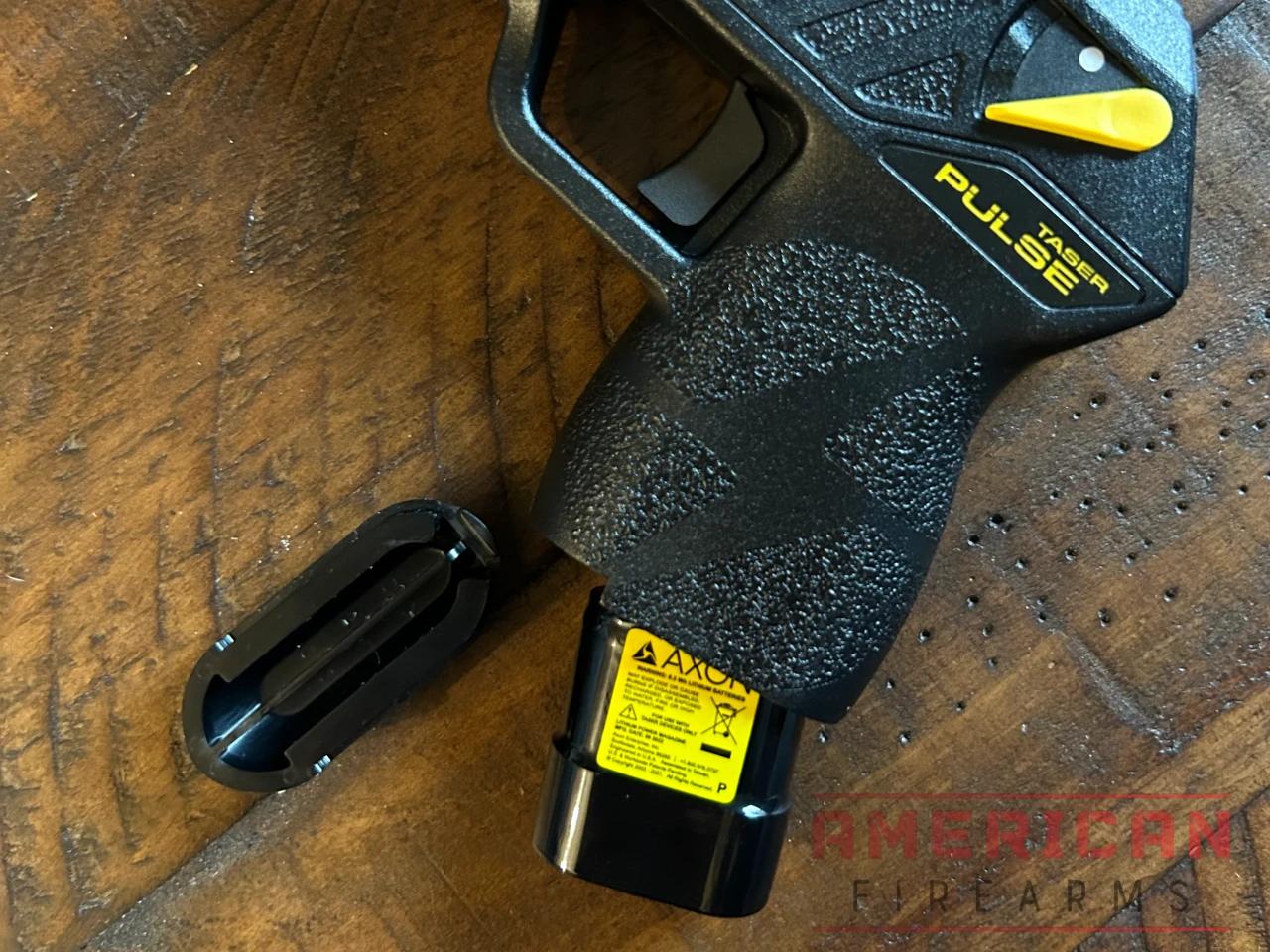
On the other hand, if you’re paying $400 for the unit, many people I know would prefer to be able to recharge the battery vs. shelling out $25 for another one down the road.
Contact Points & Range:
On the front end of the Pulse are two metal contact points. These are where the arc of electricity jumps across, activating the cartridges. The Pulse boasts a range of 15 feet, thanks to its flying barbed probes.
This range provides a safety cushion, allowing users to engage a threat without getting too close.
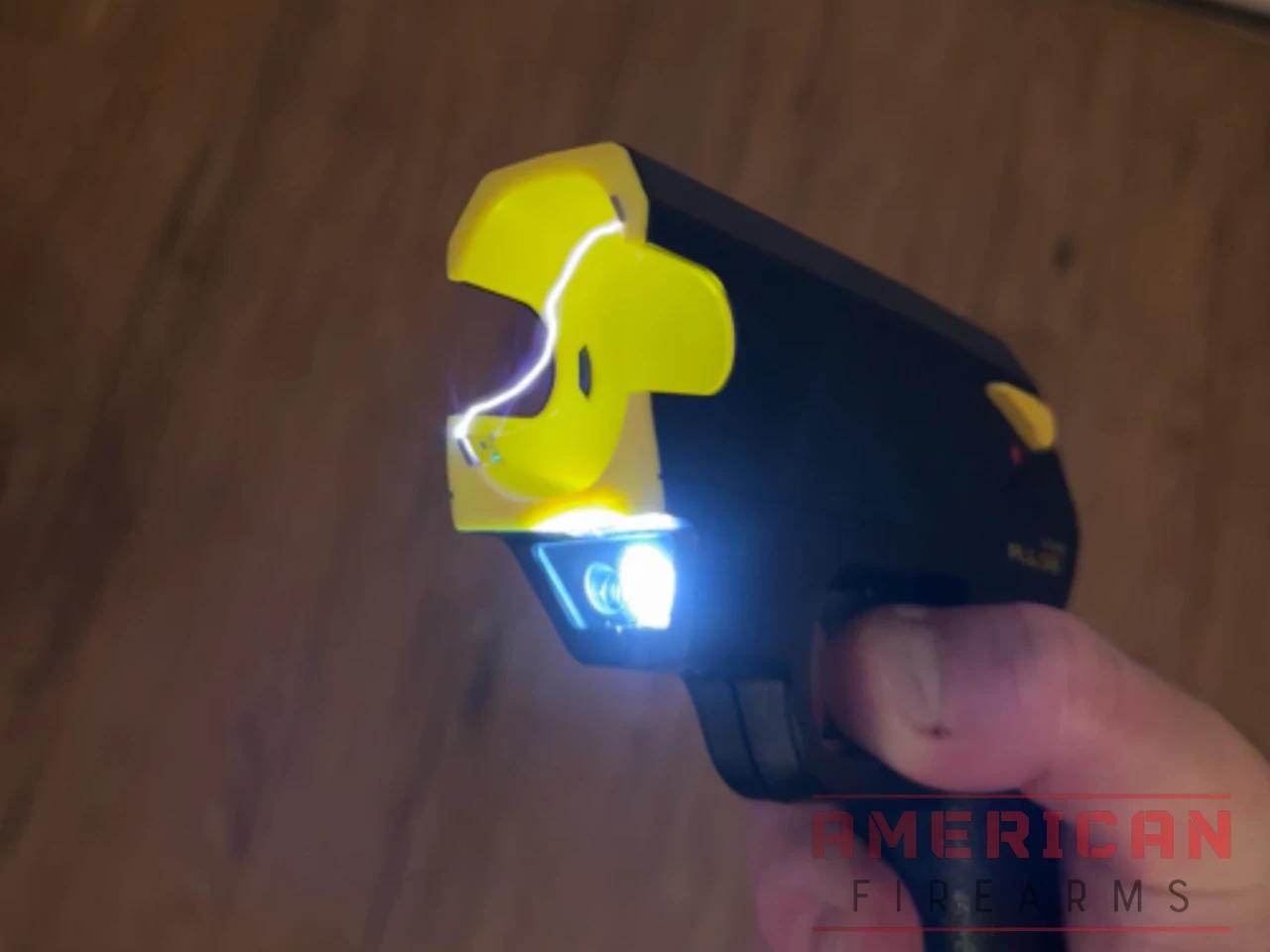
The Pulse’s probes fire in an over-under orientation (rather than side-by-side) which arcs the lower probe down to ensure appropriate spacing for the deployment of the shock.
I tested my cartridges at the specified 15 feet, with the dart spread landing at 2 feet across the test target. I was curious about how additional distance would impact the spread, so I dropped back to 20 feet (granted, well outside the accepted range), which saw the lower dart miss the target entirely. Closer is better with the Pulse.
Duration of Effect:
I really like how the Pulse continues to deliver an electric shock for 30 seconds without the user needing to continually press the trigger. Once the probes hit the target you can drop the unit and get out of the situation.
If needed, reactivating the safety will shut off the shock. You can (if you’re a bit of a sadist) then pull the trigger and tase for another 30 seconds.
While some might shirk at the idea of leaving their self defense tool at the scene, the good news is TASER has what they call a “Safe Escape Product Replacement Guarantee”, that guarantees you a new unit if a police report deems your use lawful self-defense.
My Experience With The Pulse
When I first laid my hands on the Pulse, I was impressed. The design, while reminiscent of a subcompact handgun, feels different from a traditional handgun.
It’s lightweight, weighing in at just 8 ounces, very short, and the polymer build gave it a smooth, almost toy-like, quality. For comparison, a Glock 19 weighs 29 oz when loaded, so you’re talking about a product that’s almost one-quarter a compact pistol’s weight.
While there are a variety of holsters available from TASER for the Pulse, as I carried it over the summer, I found it was almost perfect for pocket carry.
It’s so short and light that it practically disappears in the pocket. Plus, the fact the unit is disabled without throwing the activation lever means it’s safe to carry around with the cartridge in place without concern for giving yourself an unintentional jolt.
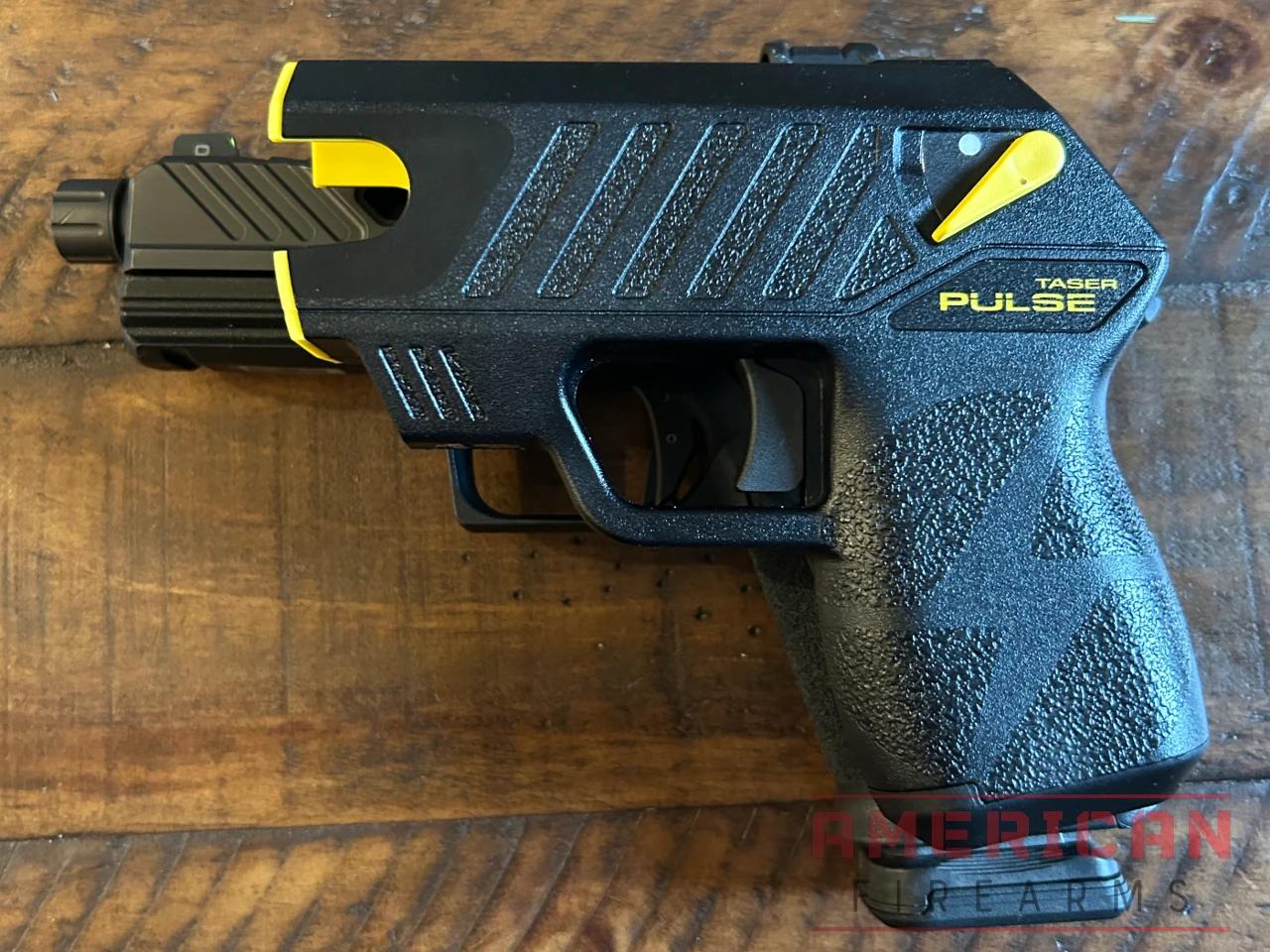
The grip is comfortable, if not particularly tactile, but considering there’s no need to control for much of any recoil, the grip is adequate. I can’t get a full grip (my pinkie hangs off much like when shooting an LCP), but it’s sufficient for the intended purpose.
The TASER Pulse, while designed for civilians, builds on the legacy of TASER devices that were initially aimed at the law enforcement market. The Pulse, however, is available to almost anyone without the need for licensing in most states.
This accessibility is fantastic for those of us who want an effective, less-lethal defense option.
Using the Pulse is straightforward. Insert a cartridge (there’s no wrong way to do it), flip the activation lever up, ensure the battery has a decent charge, and you’re ready to go. The cartridges, when fired, release two darts that deliver a 30-second charge of electricity, giving you ample time to get out of there.
As mentioned previously, you can flip the safety back on to stop the jolt, then activate the shock if needed. If you miss your target you can drop the spent cartridge and use the contact stun option, which just involves pulling the trigger.
However, it’s essential to understand the device’s limitations. The Pulse requires both prongs to hit the target for it to be effective. Thick clothing can sometimes be a challenge, although TASER mentions that the darts will penetrate most clothing types and the electricity can jump up to two inches to reach the skin, so getting close to open skin can still produce the desired effect.
My experience with the TASER Pulse has been largely positive. It offers a balance between safety and effectiveness, making it a valuable addition to my personal defense toolkit.
While it’s not a replacement for traditional firearms, it provides an alternative for people who aren’t comfortable carrying lethal force but still want an effective self-defense tool.
Potential Issues
While the TASER Pulse offers a compelling solution for those seeking a less-lethal defense option, it’s essential to approach it with a clear understanding of its potential limitations and considerations. Here’s my take on some of the issues you might encounter and factors to keep in mind.
One-Shot Cartridges:
The Pulse operates with single-use cartridges, meaning once you’ve fired, you’ll need to replace the cartridge to use it again. This limitation can be a concern in situations where multiple threats are present.
Historically, many weapons, like the single-shot muskets used in the Revolutionary War, had similar limitations. Soldiers had to be strategic, knowing they might only get one shot before needing to reload.
Effectiveness Against Thick Clothing:
While the TASER Pulse is designed to penetrate most clothing types, there’s a possibility that especially thick clothing could hinder its effectiveness.
The electricity needs to reach the skin to incapacitate, and while it can jump up to two inches, there’s no guarantee in every situation.
The Battery:
The Pulse’s battery is designed to last about two years. While this might seem like forever, the inability to charge the unit is a downside in my opinion, making it crucial to regularly check the battery status, especially if you’ve used the contact stun feature frequently.
A device with a depleted battery could leave you vulnerable at a critical moment.
Potential Misidentification:
The Pulse’s design, while user-friendly, closely resembles a subcompact handgun. This similarity could lead to potential misidentification, especially in high-stress situations.
There’s a historical parallel here: during World War II, the British Sten gun and the German MP40 had similar profiles, leading to occasional friendly fire incidents.
Lack of Familiarity:
Like any defense tool, the effectiveness of the TASER Pulse is closely tied to the user’s familiarity and training with the device. It’s not just about knowing how to fire it, but also understanding its range, limitations, and how to handle potential malfunctions or misfires.
Take, for example, my least favorite thing about the Pulse: its deactivation mechanic. There’s no way to deactivate an active deceive with the trigger alone — you have to use your free hand to switch the safety back on.
This feels unnecessarily complicated to me. Why not a 2-second hold of the trigger to deactivate? This is especially problematic with the contact mode where you’ll be within arm’s length of the target. Why occupy the user’s free hand with the deactivation?
Pros and Cons
The Good:
- Provides a non-lethal means of self-defense, reducing the risk of causing permanent harm.
- Easy to handle and carry.
- Includes an LED light and laser for better target identification and accuracy.
- Simple operation with a clear battery status indicator.
- Offers a safety cushion with an effective range of 15 feet.
- 30-second electric shock gives users plenty time to retreat.
- Available to civilians in most states without the need for special licensing.
The Bad:
- Once fired, the cartridge needs to be replaced, which can be a limitation in situations with multiple threats.
- The device’s effectiveness can be compromised if the target is wearing particularly thick clothing.
- While the battery is designed to last about two years, frequent use of features like the LED light might deplete it faster.
- Due to its resemblance to a handgun, there’s a risk of misidentification, especially in high-stress situations.
Wrap Up
While the TASER Pulse offers a unique and valuable addition to personal defense options, it’s essential to approach its use with a comprehensive understanding of its potential issues and considerations.
Being informed and prepared will ensure that you can use the device effectively and safely when it matters most.
Sign up for our newsletter
Get discounts from top brands and our latest reviews!

